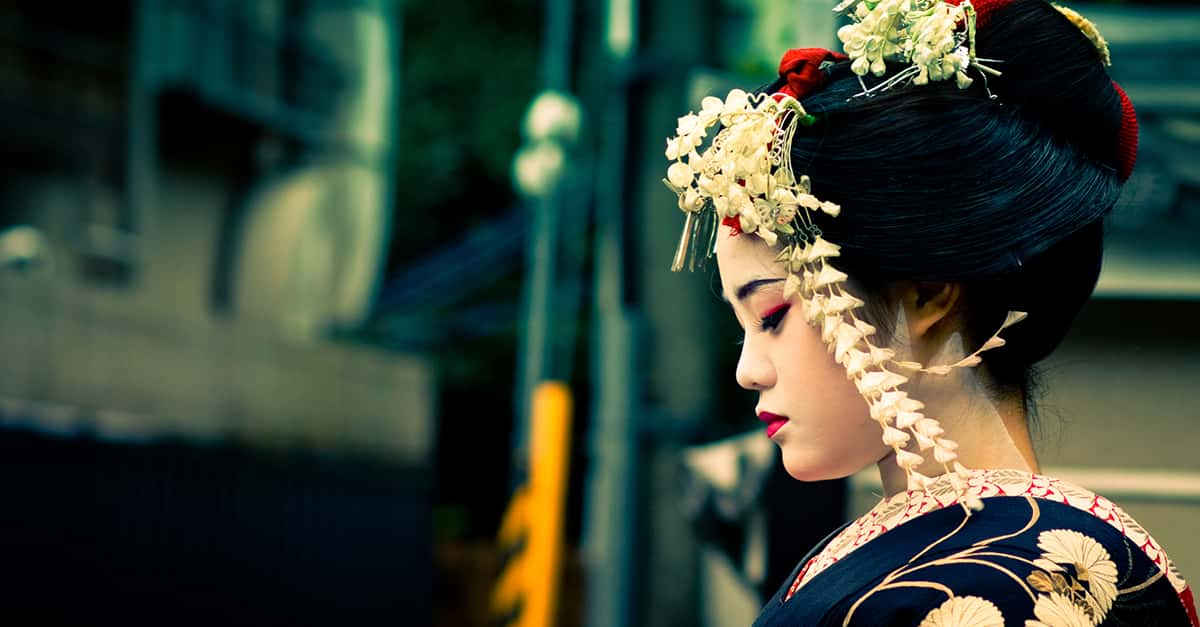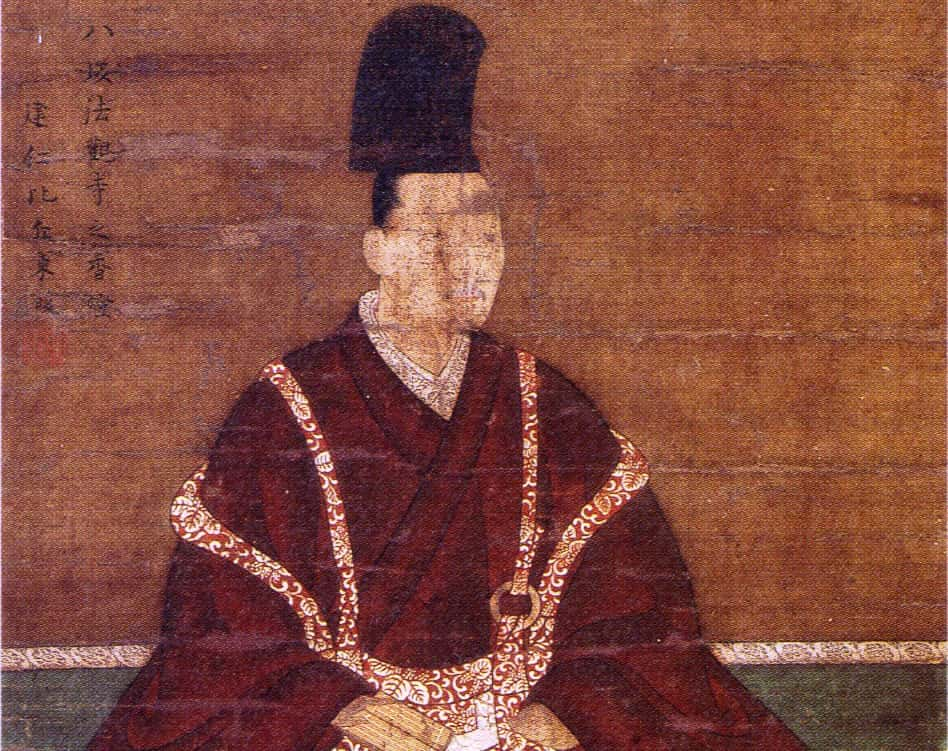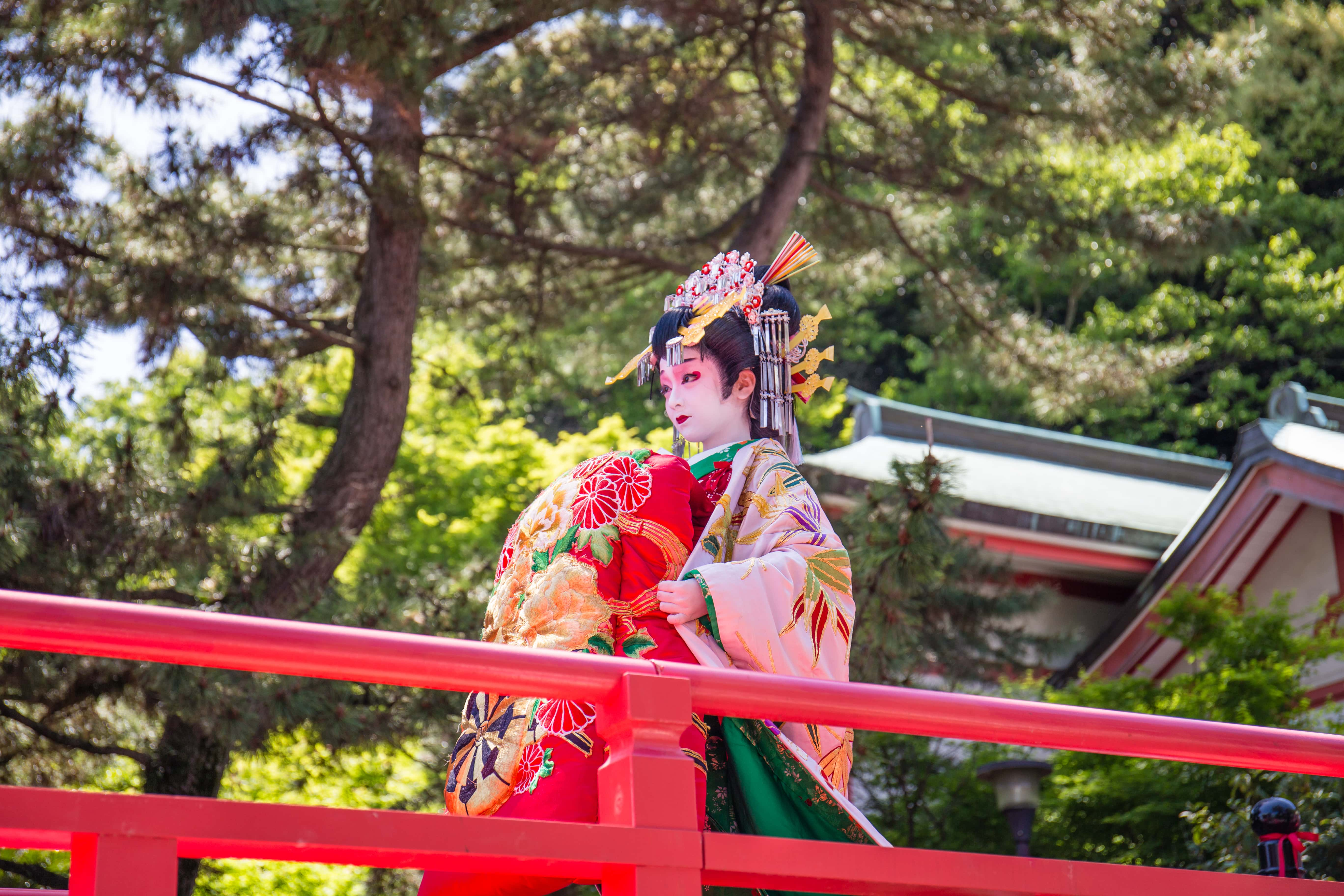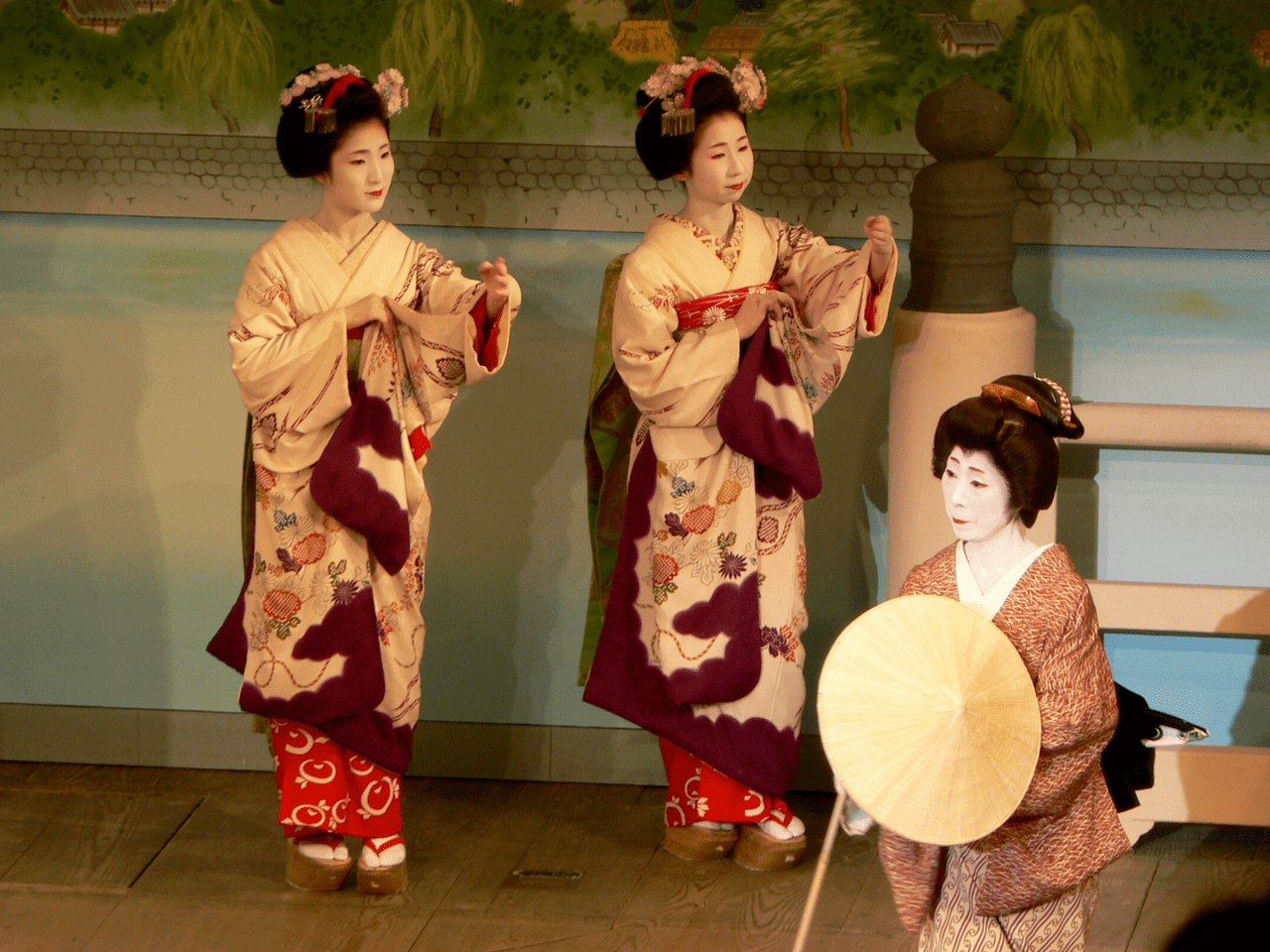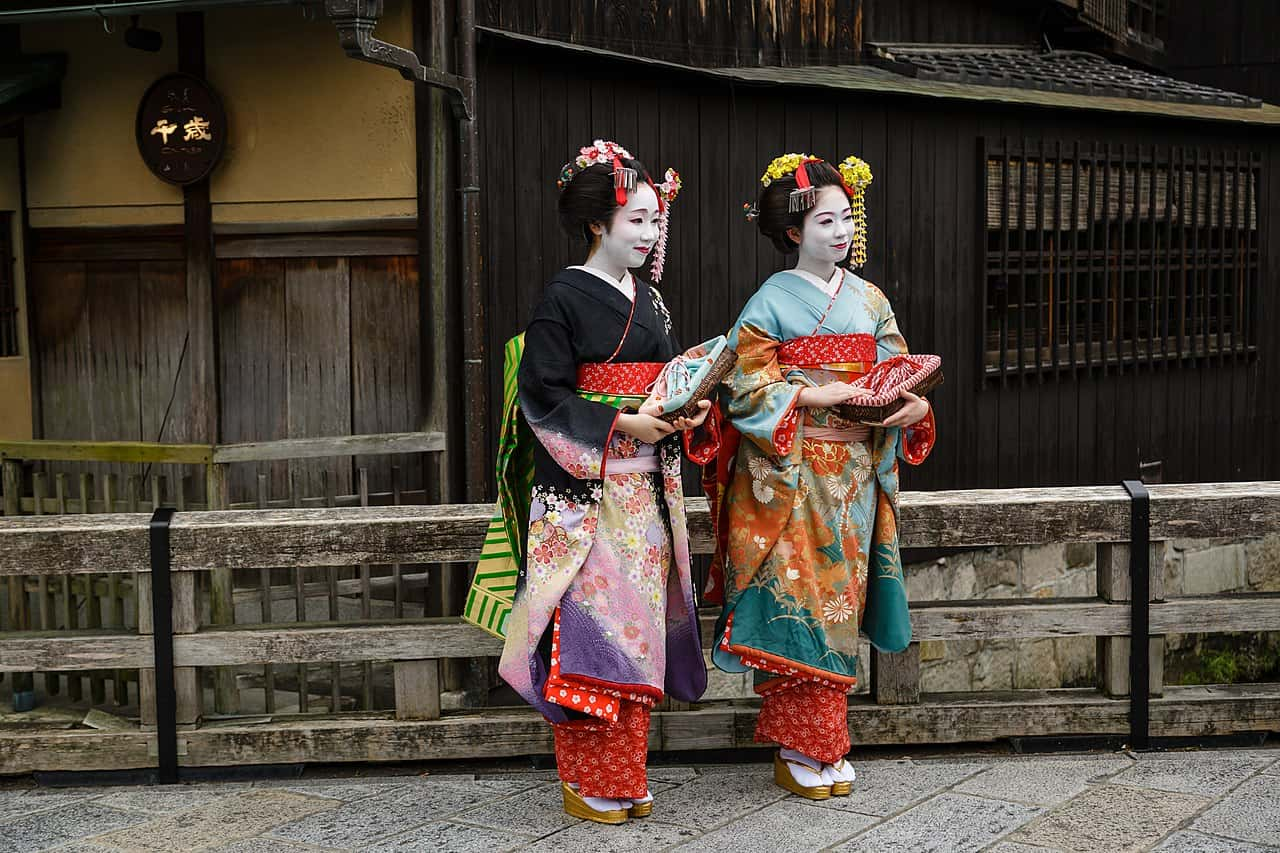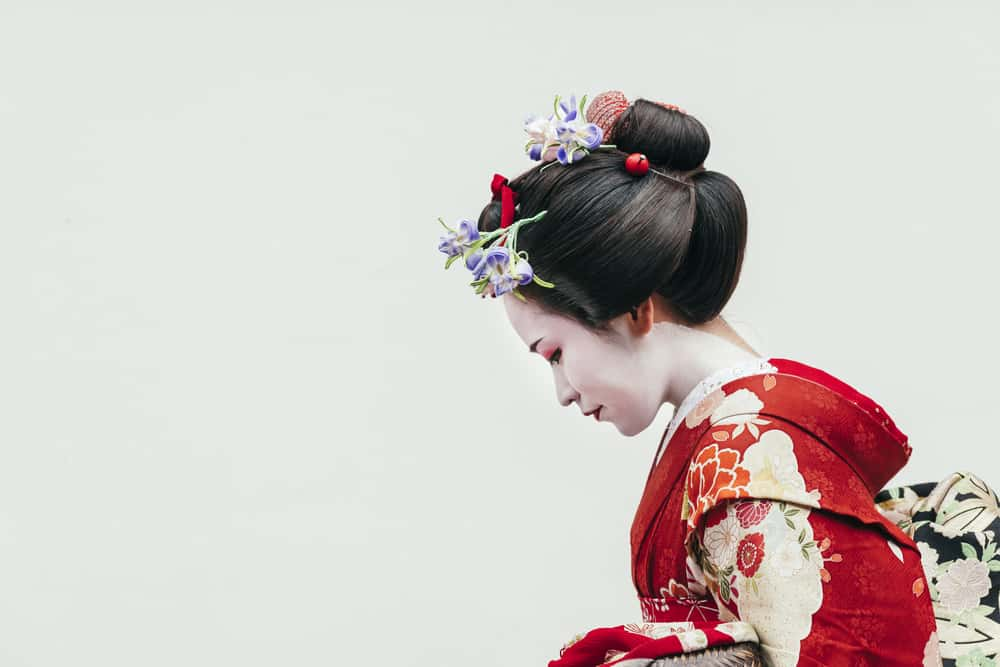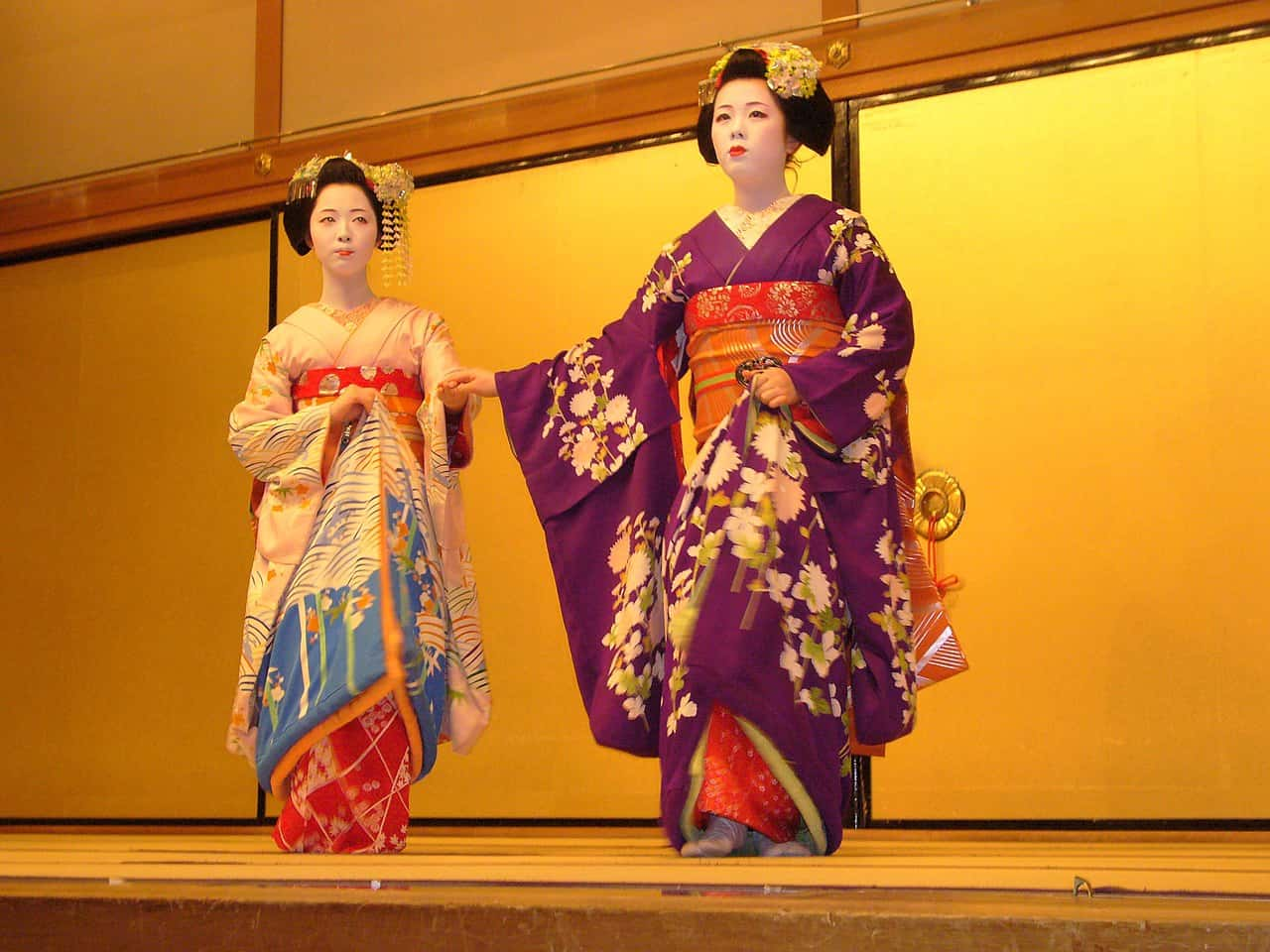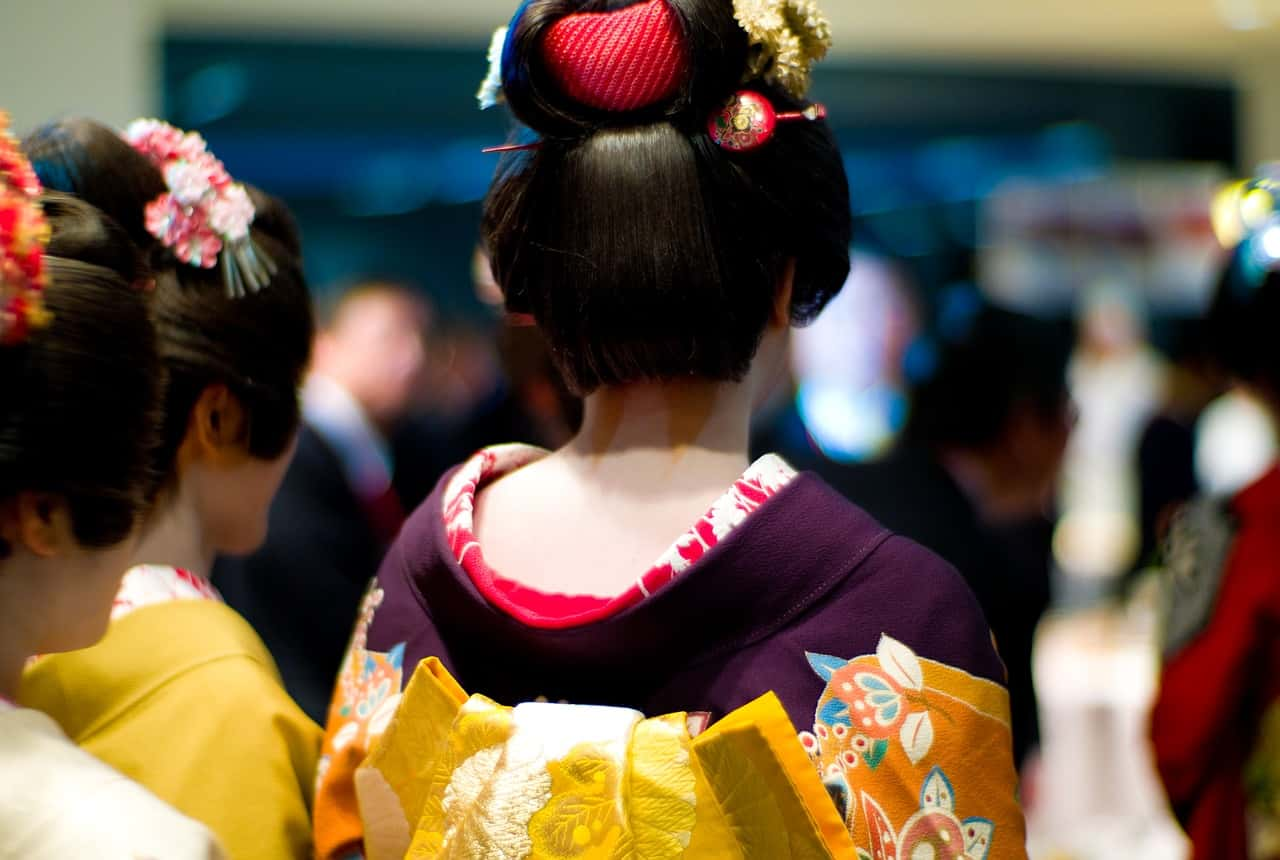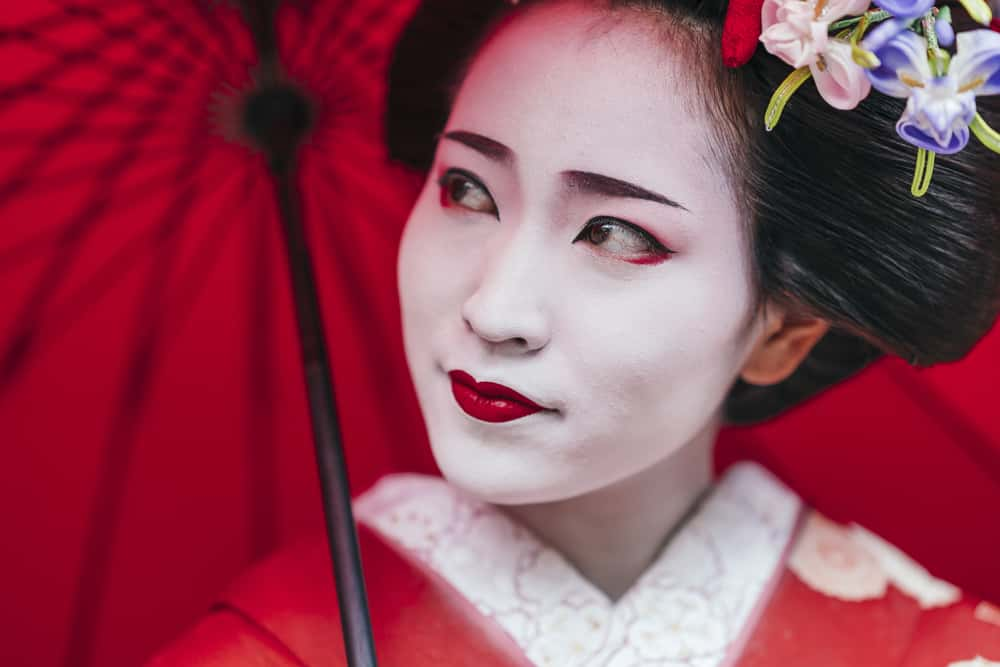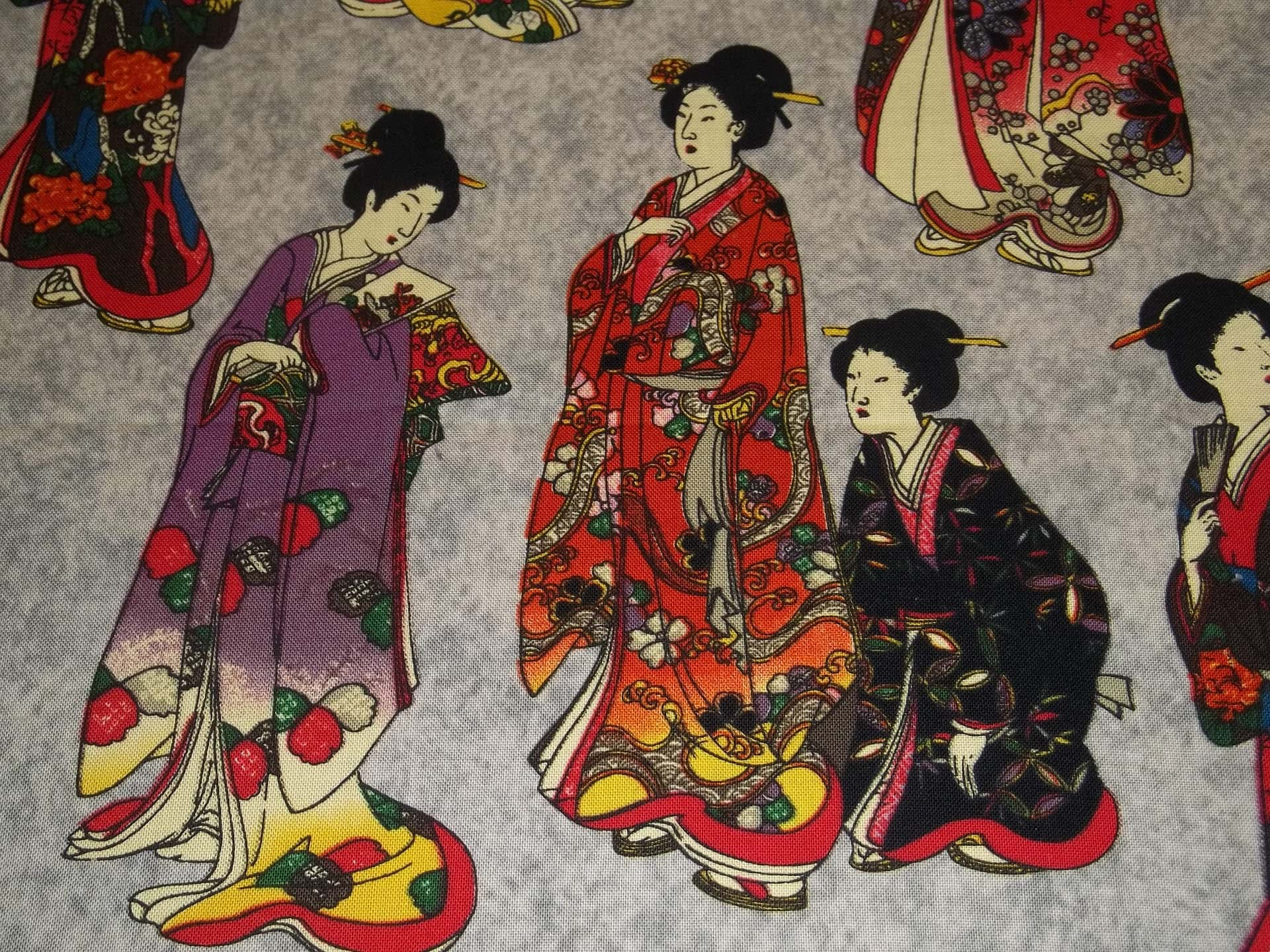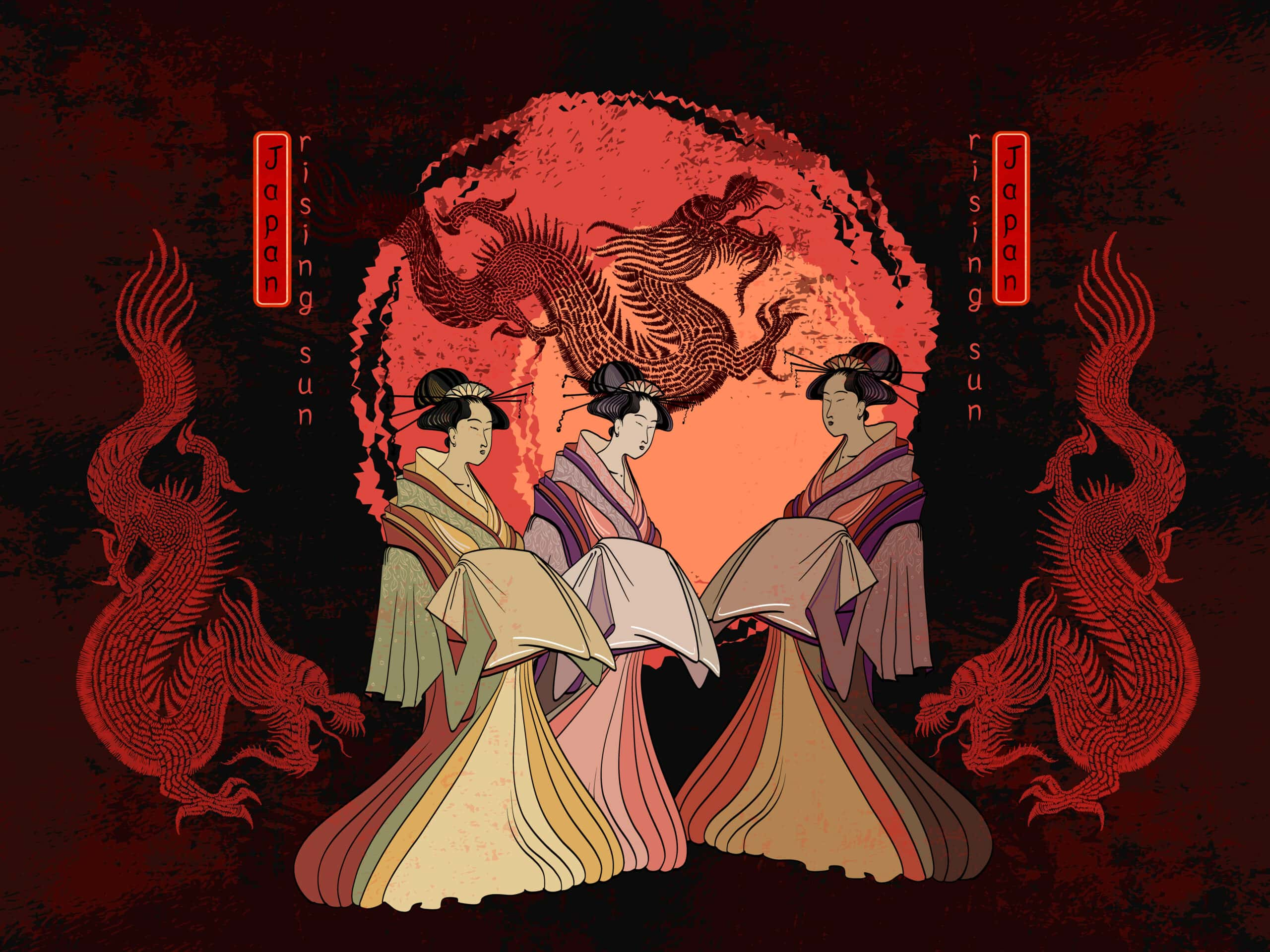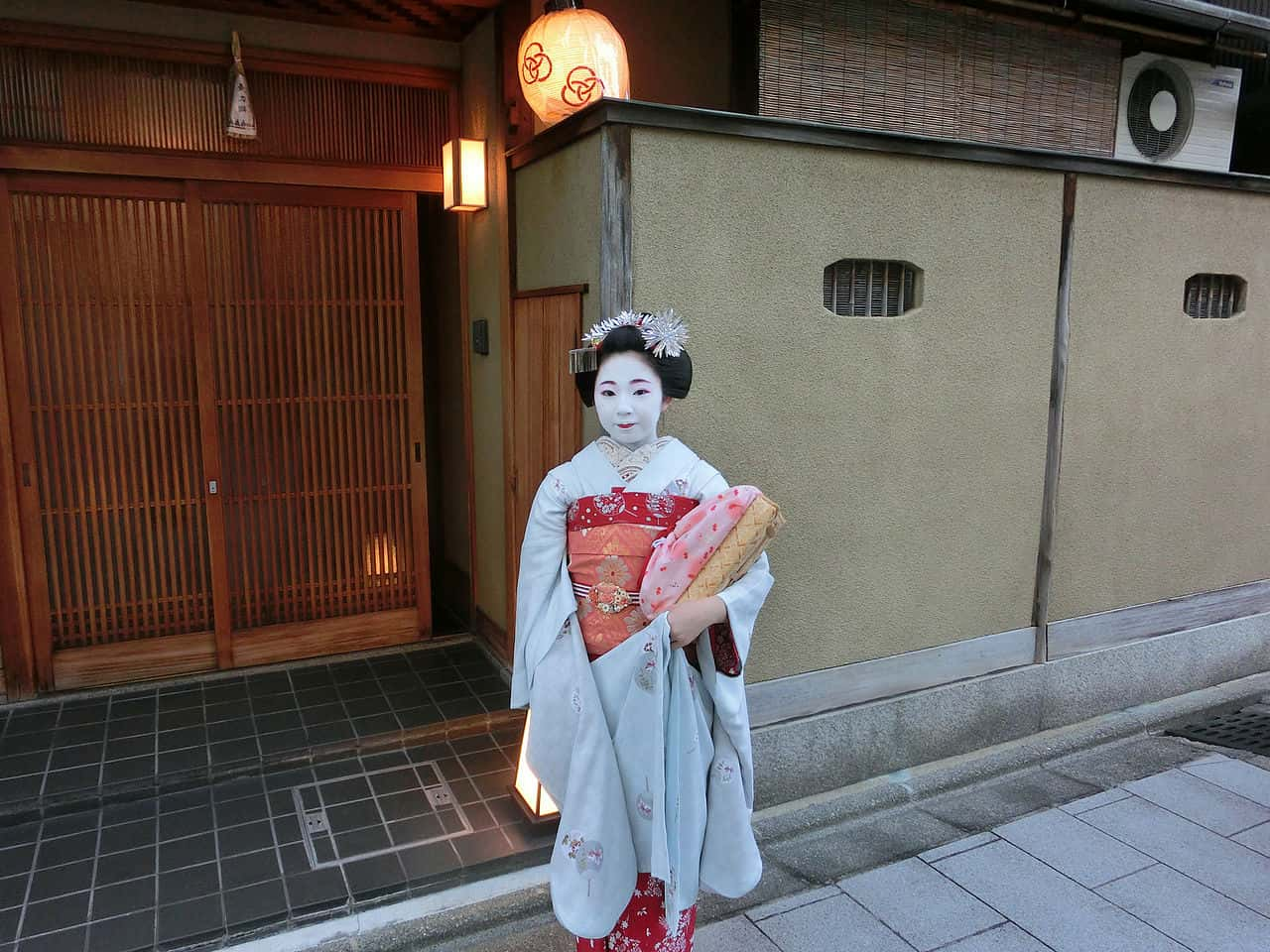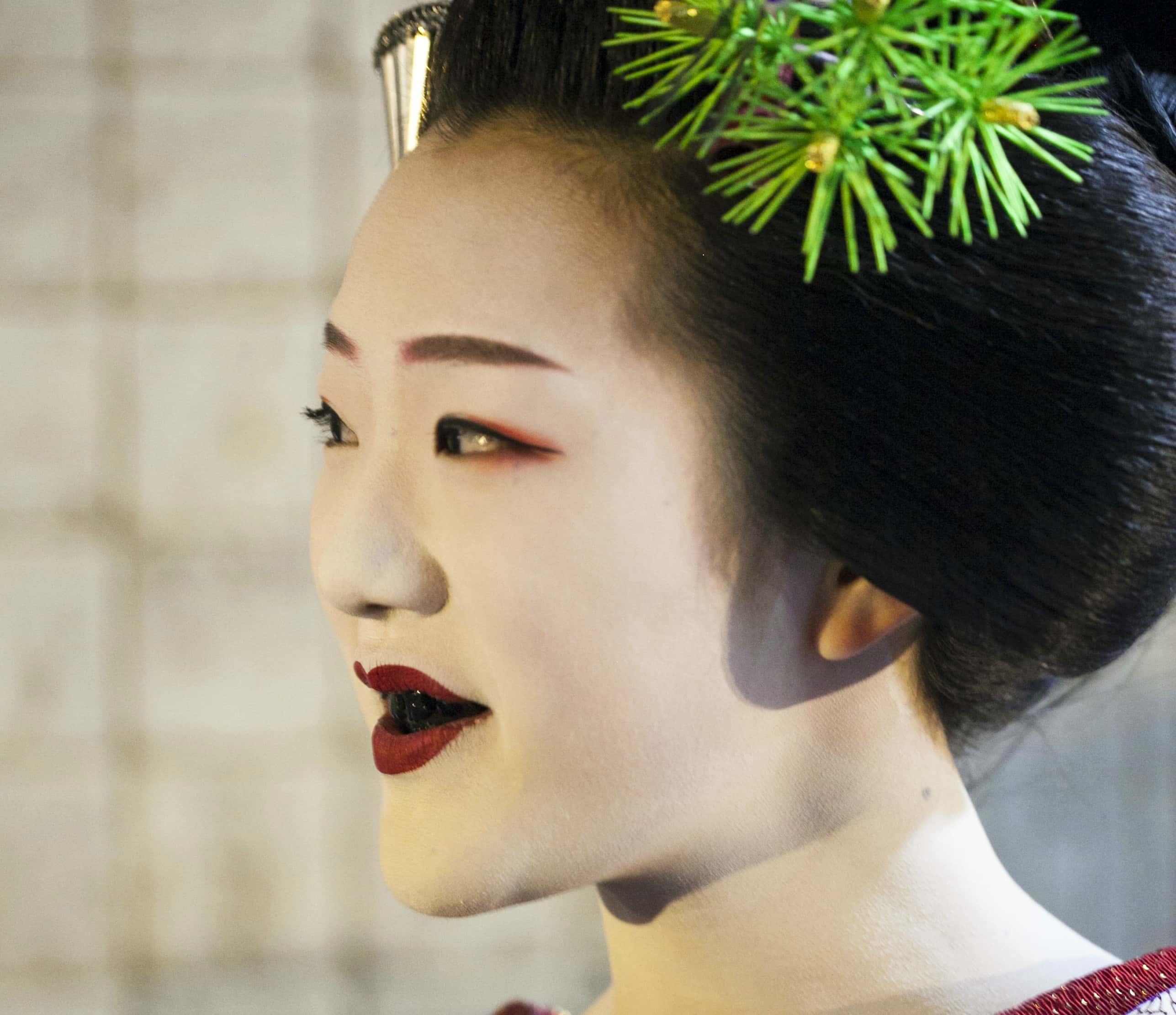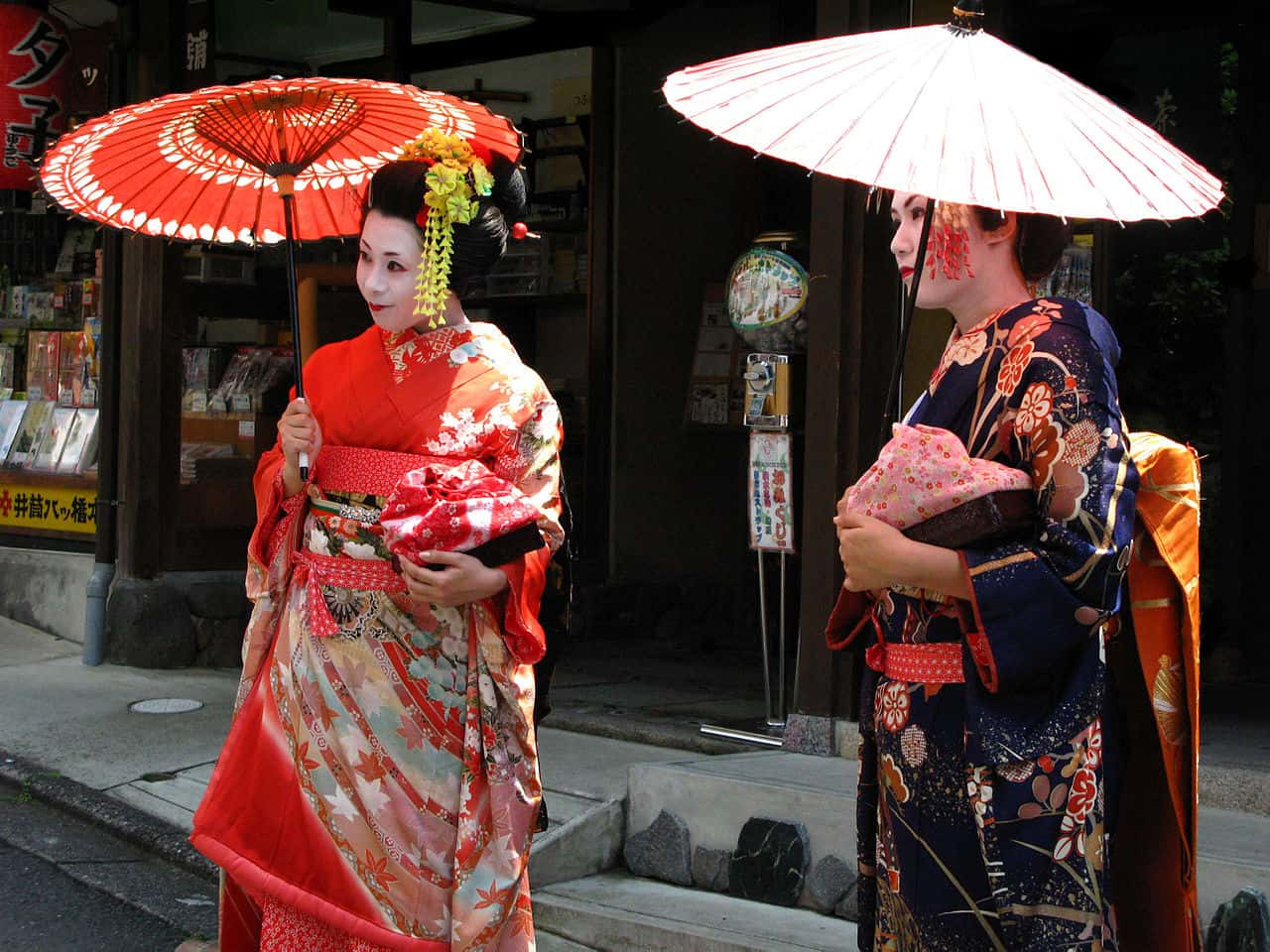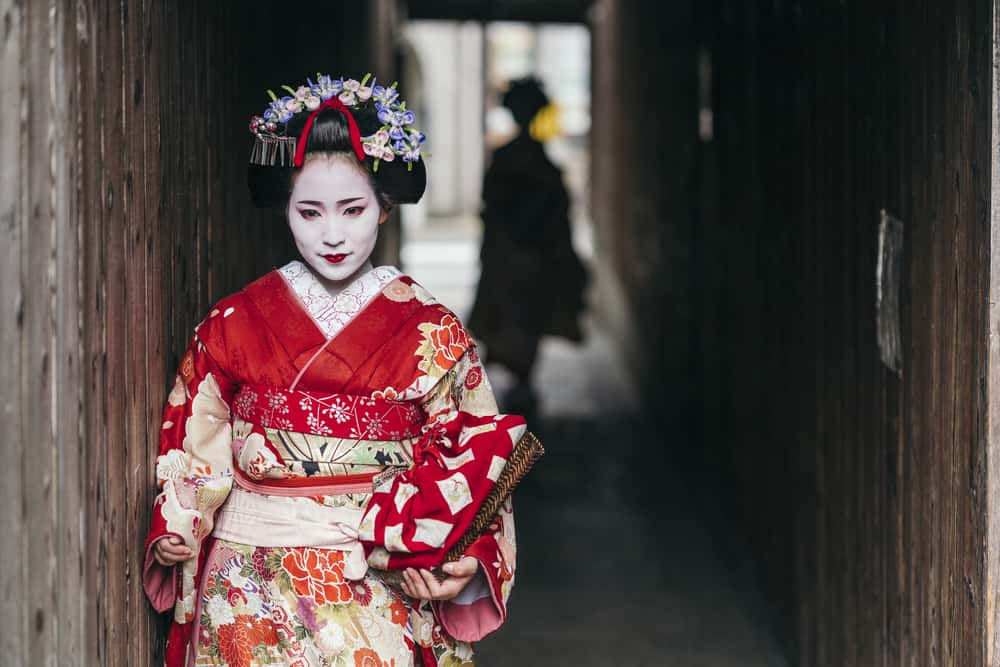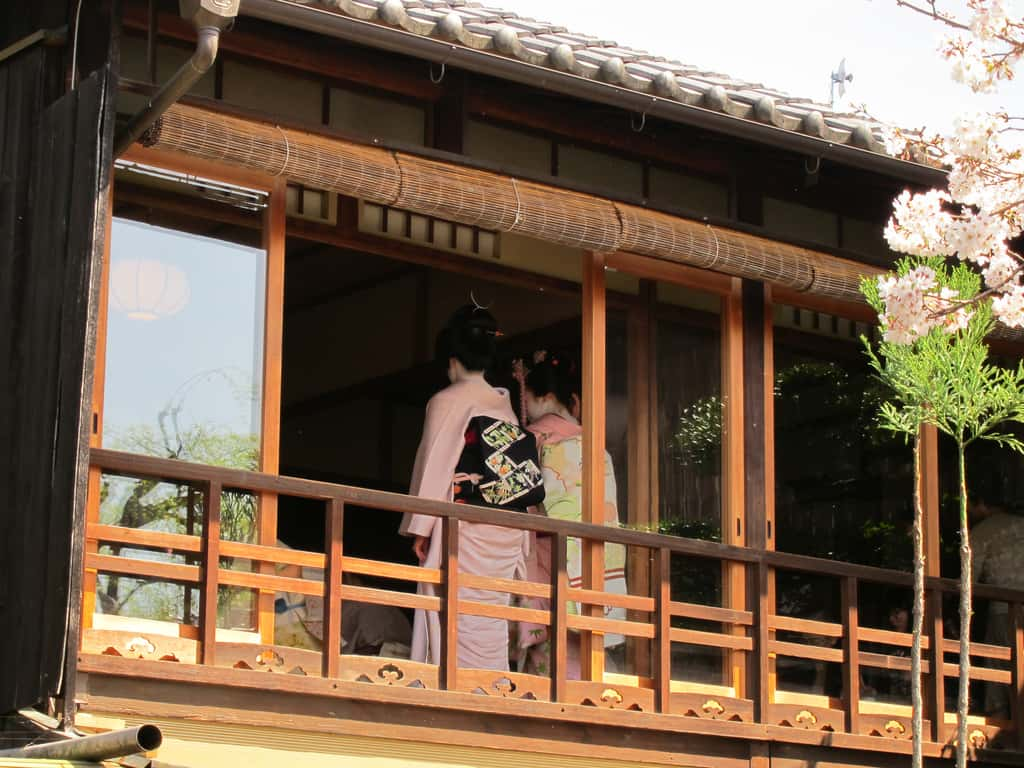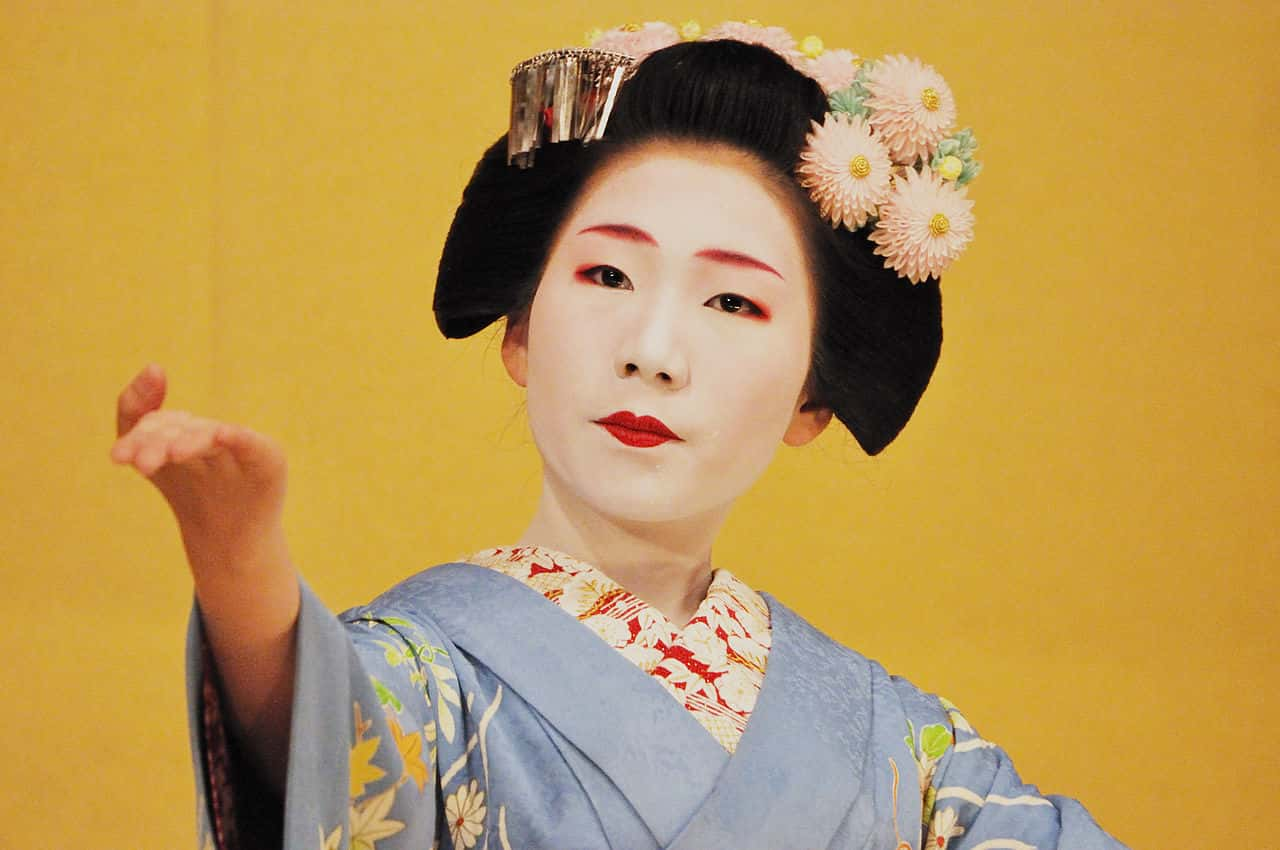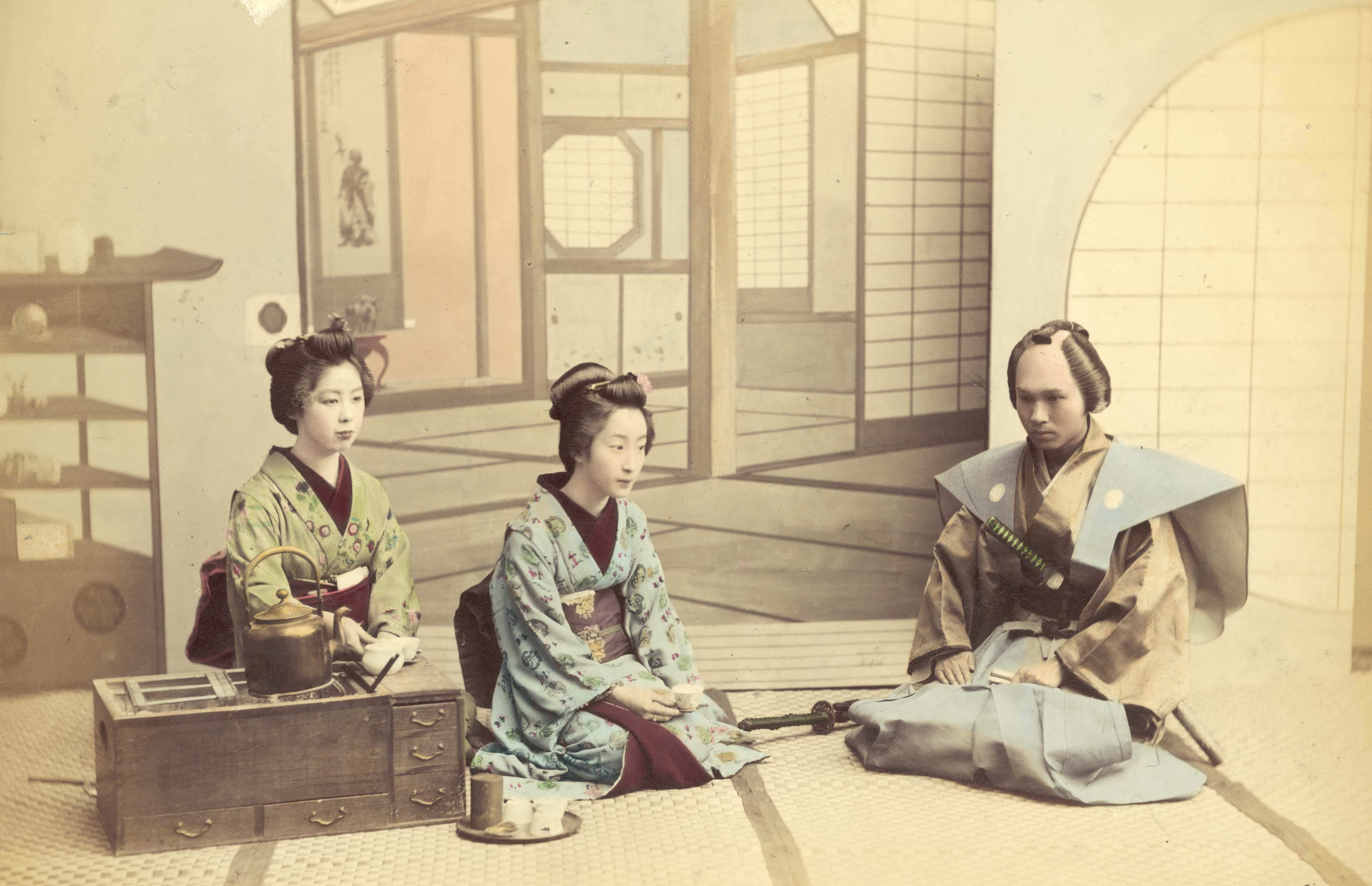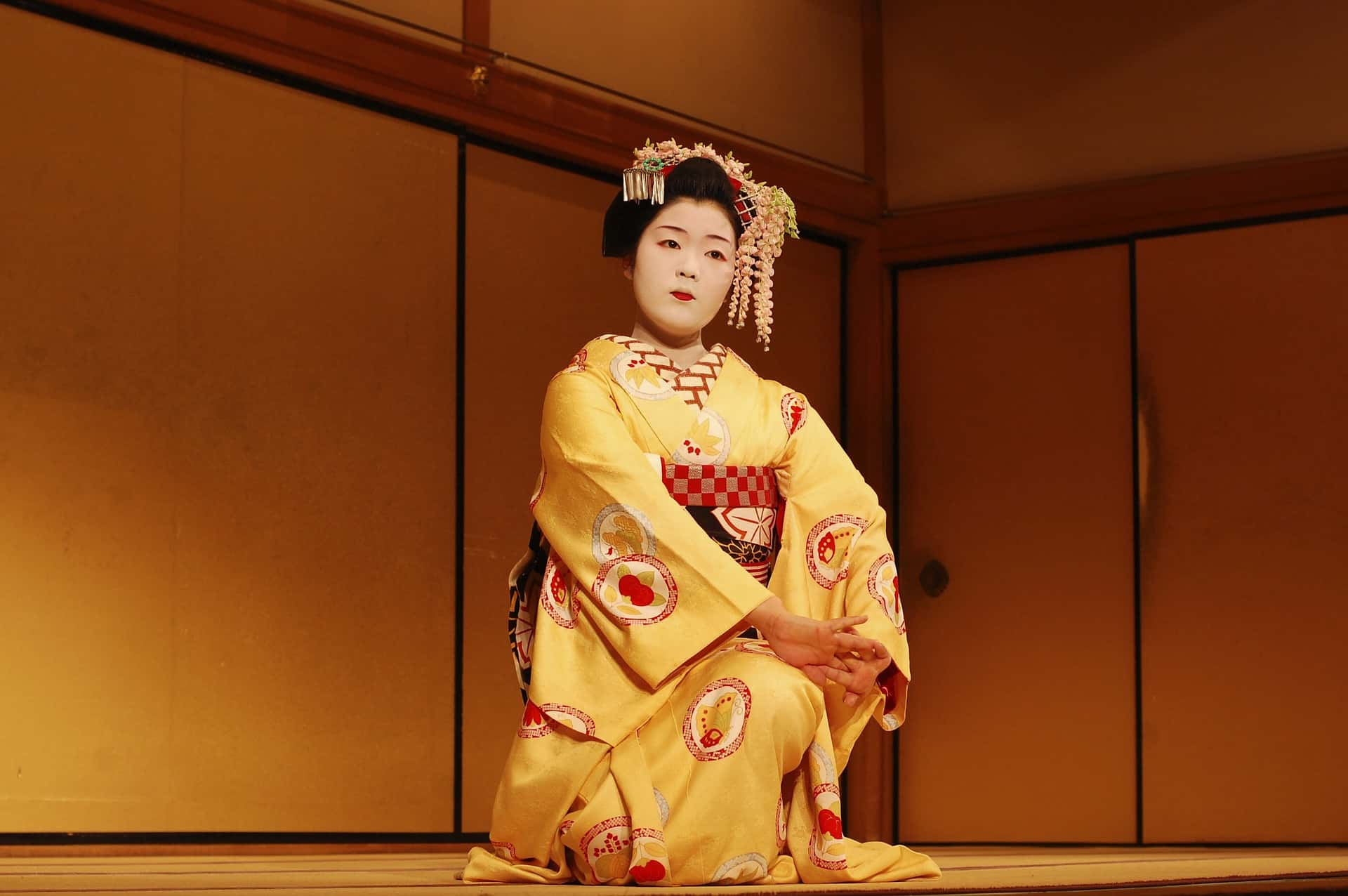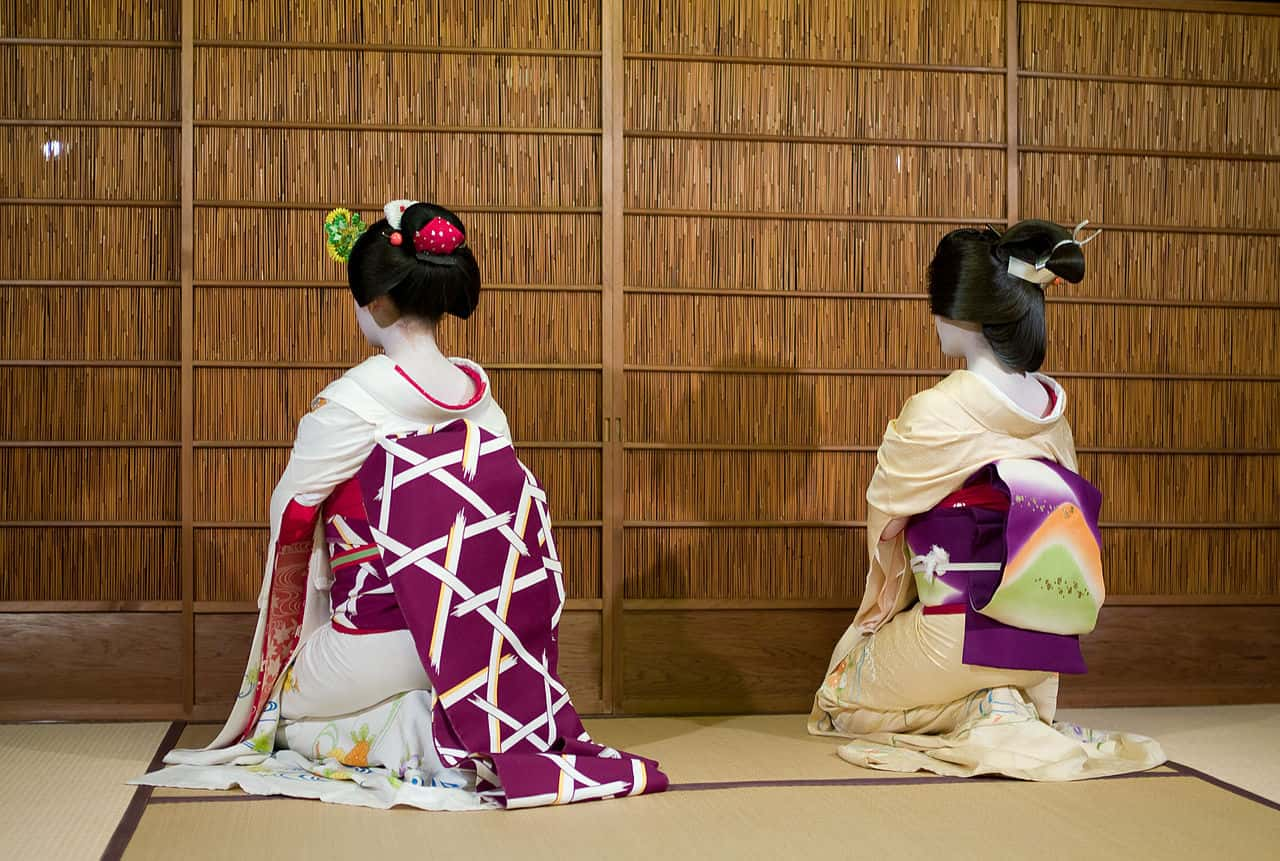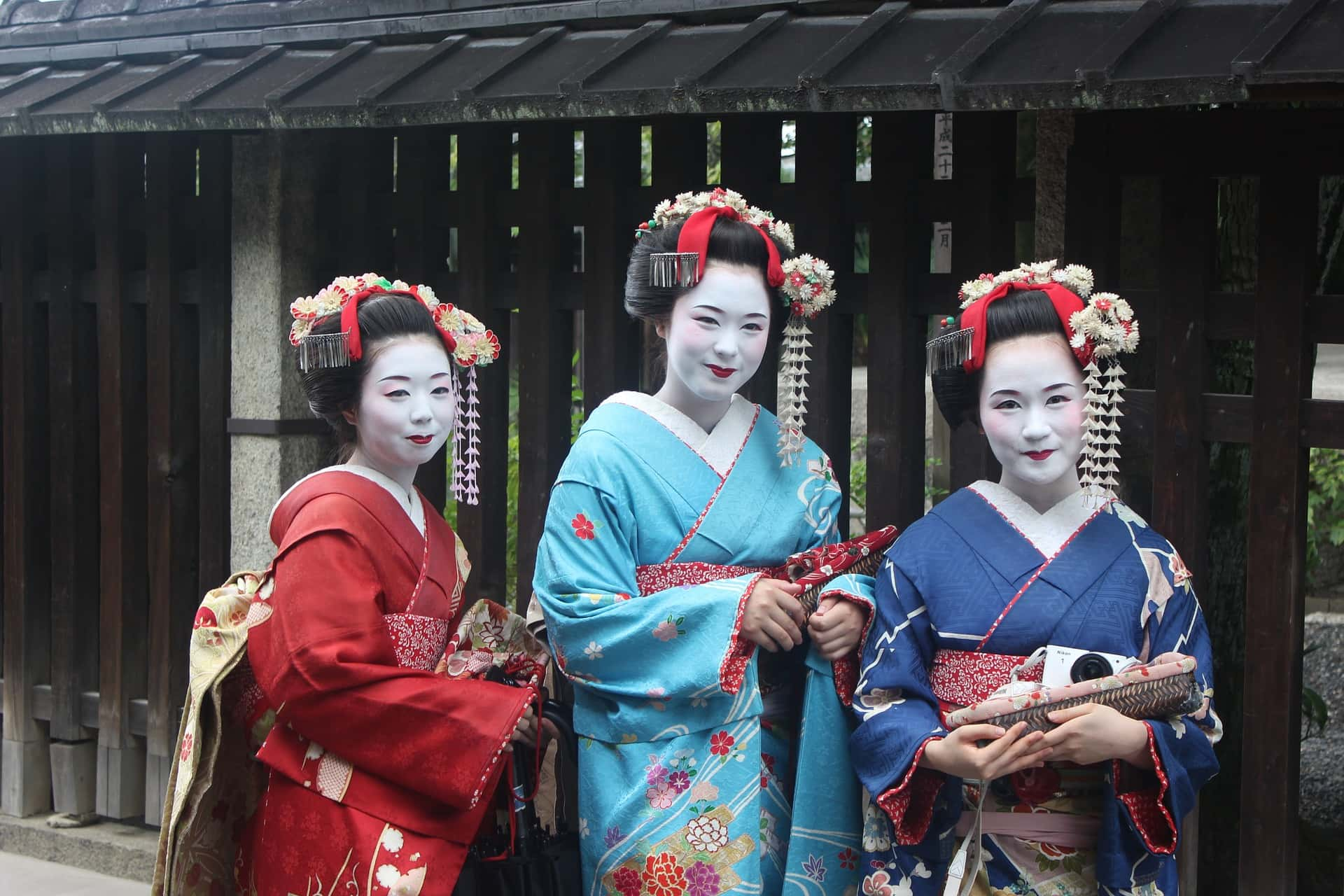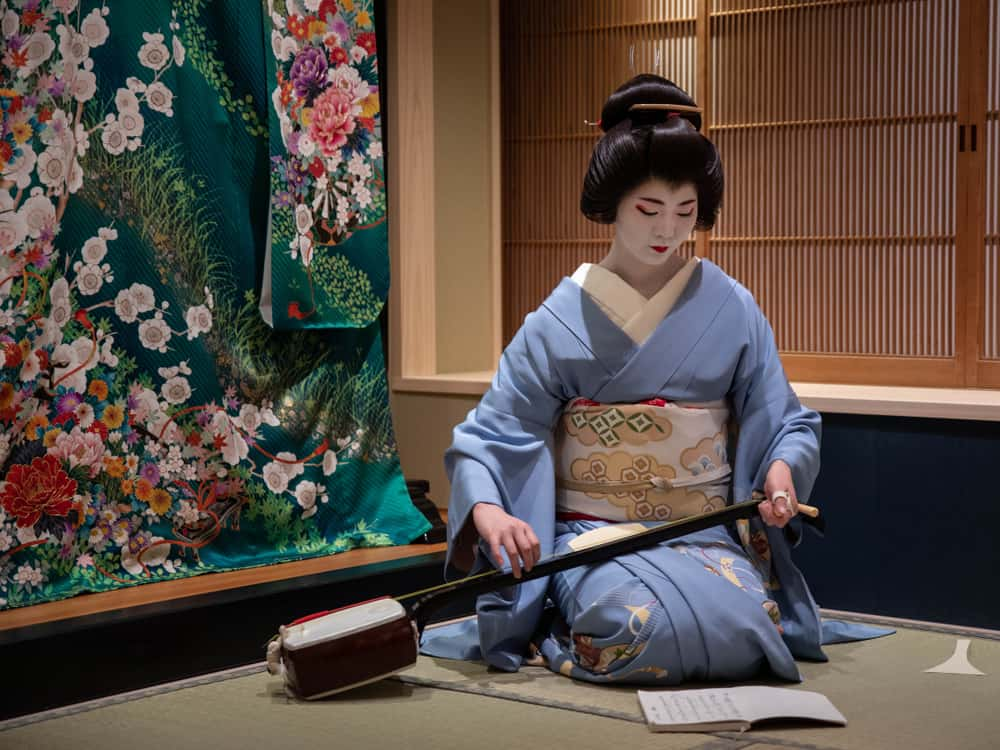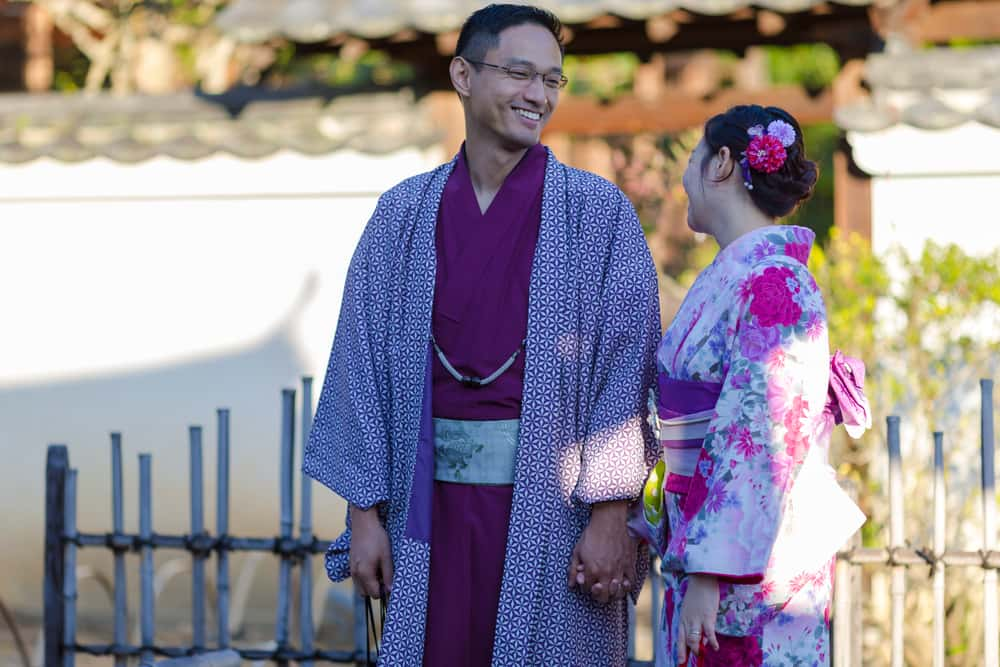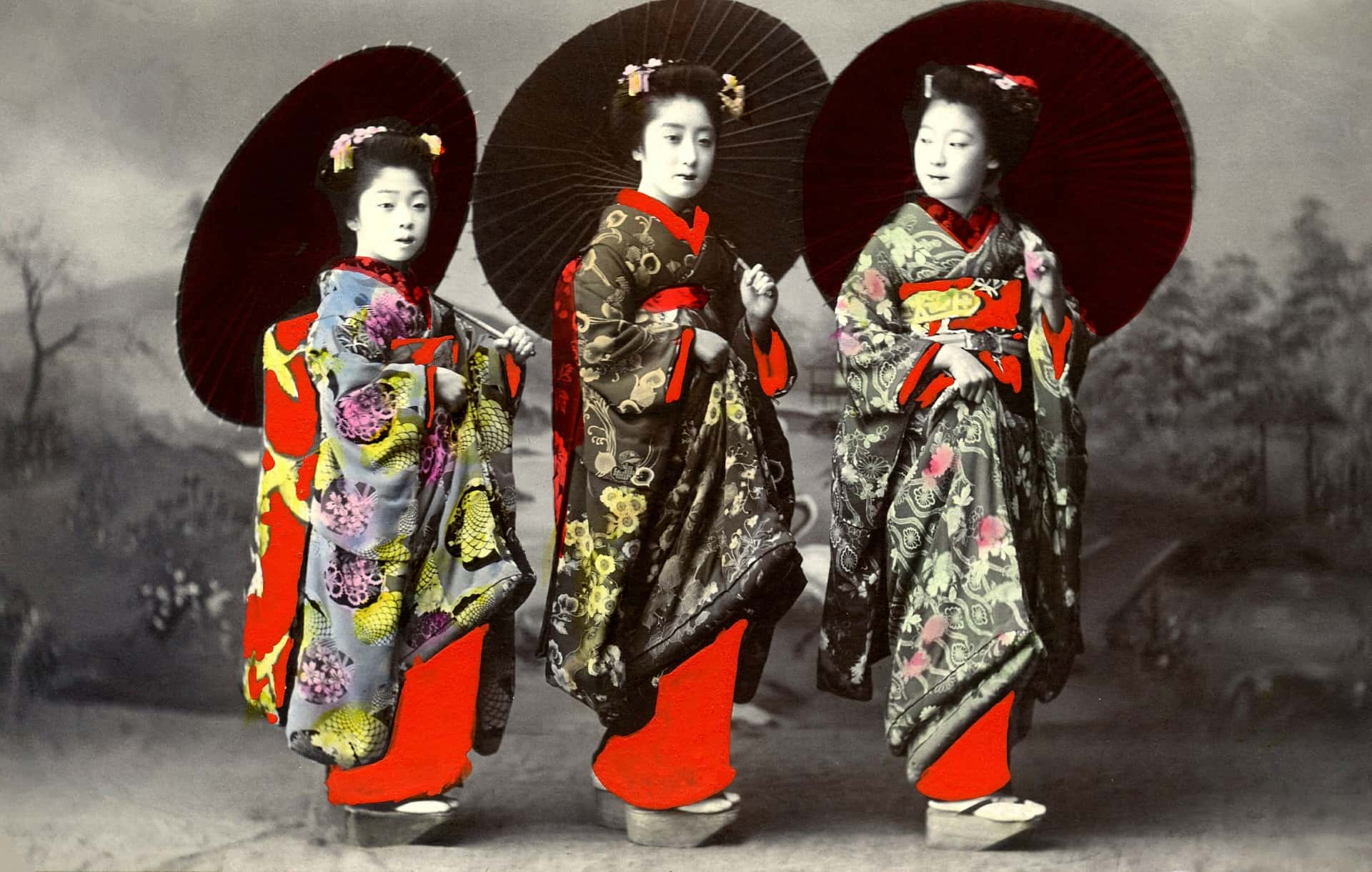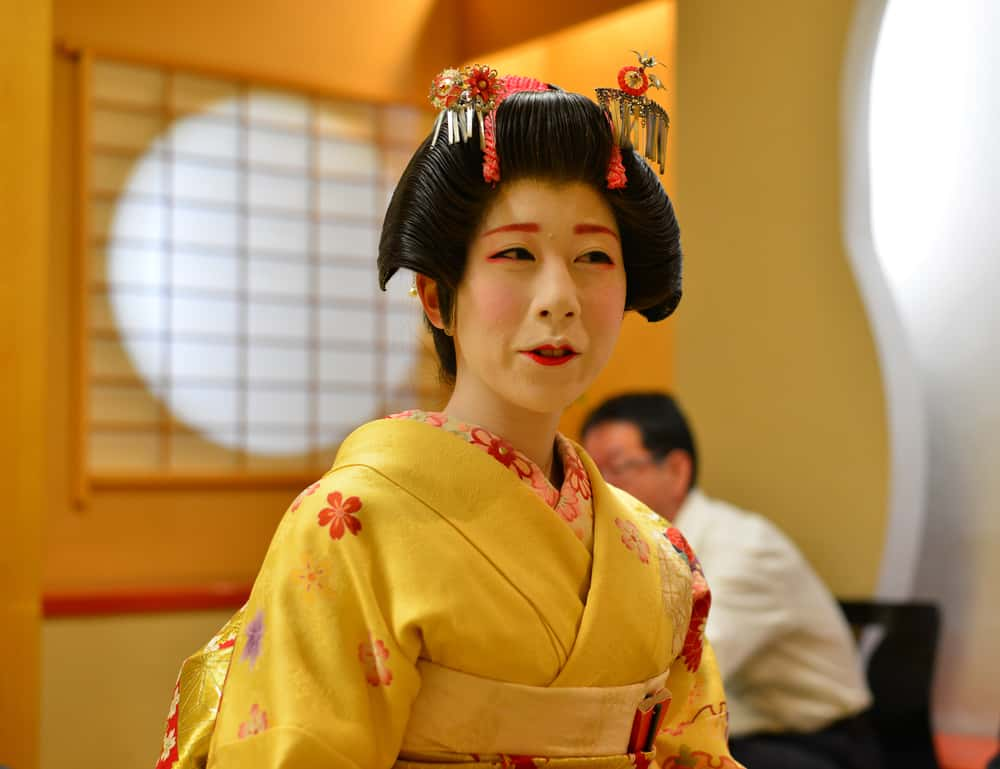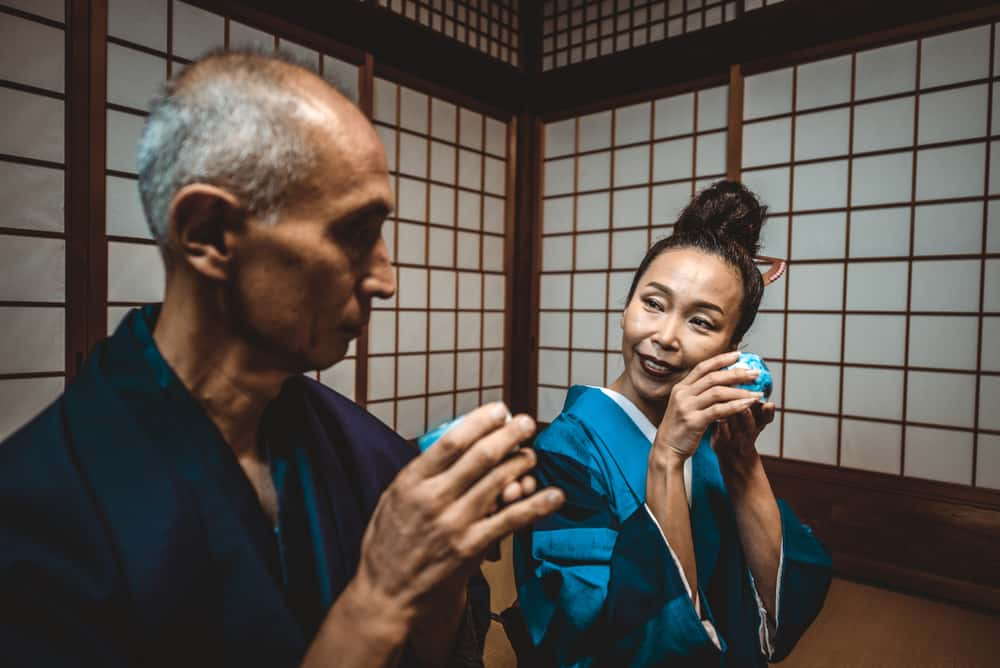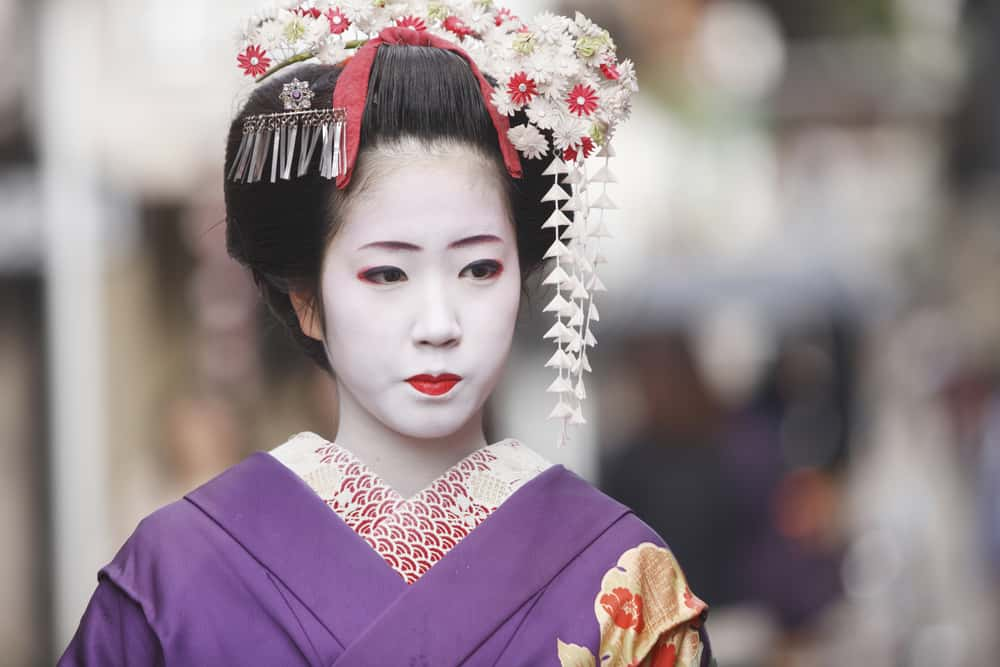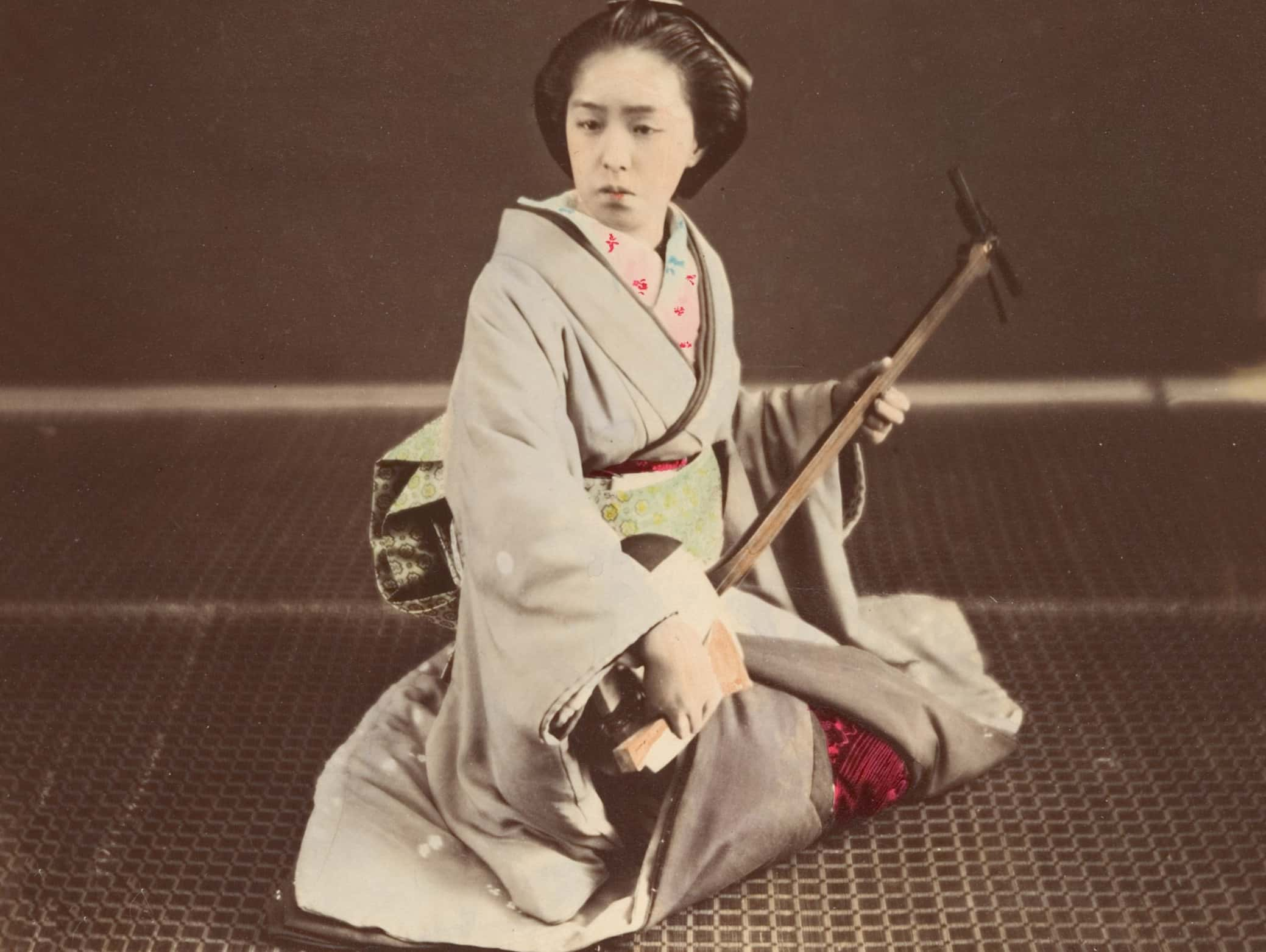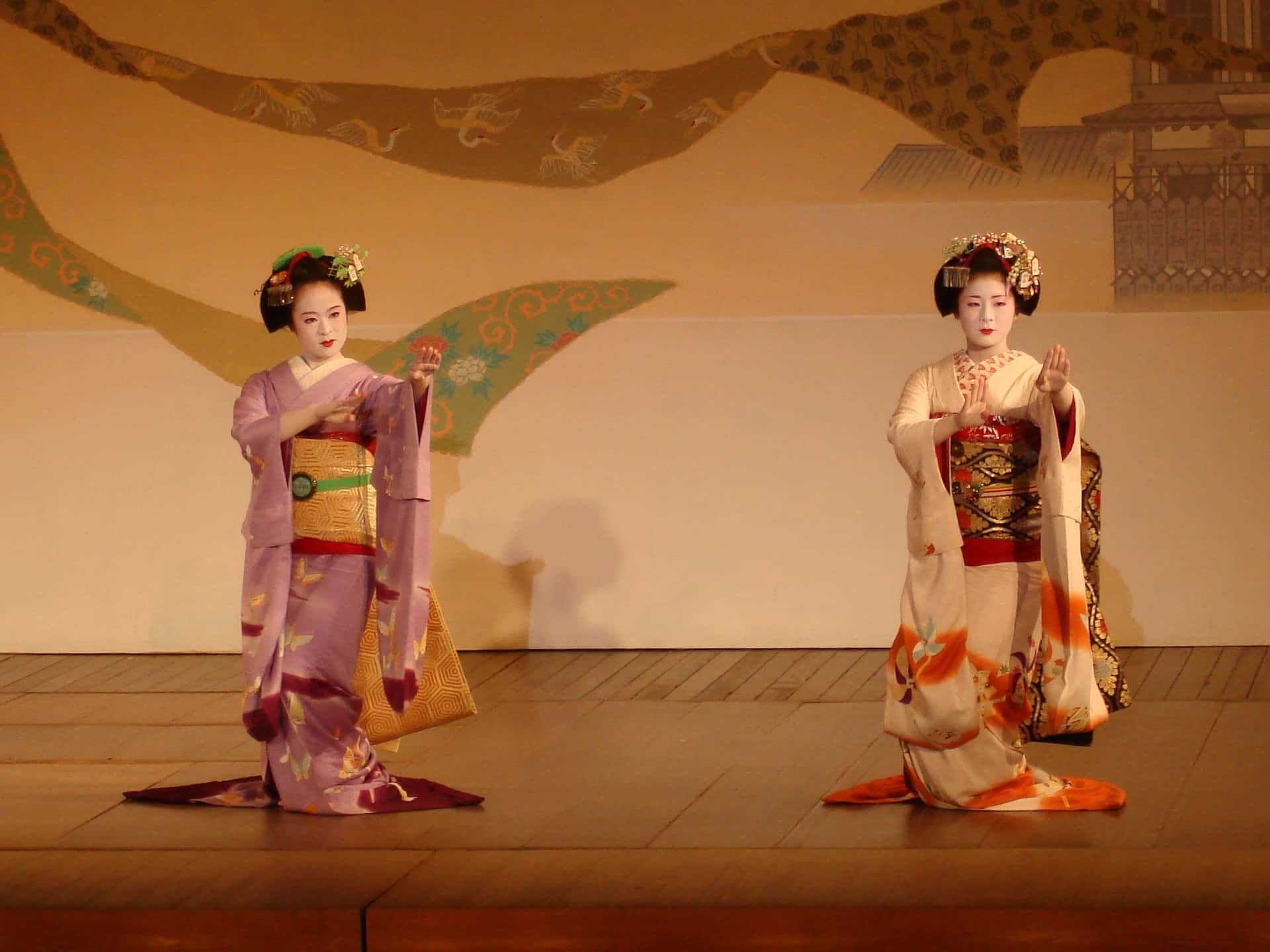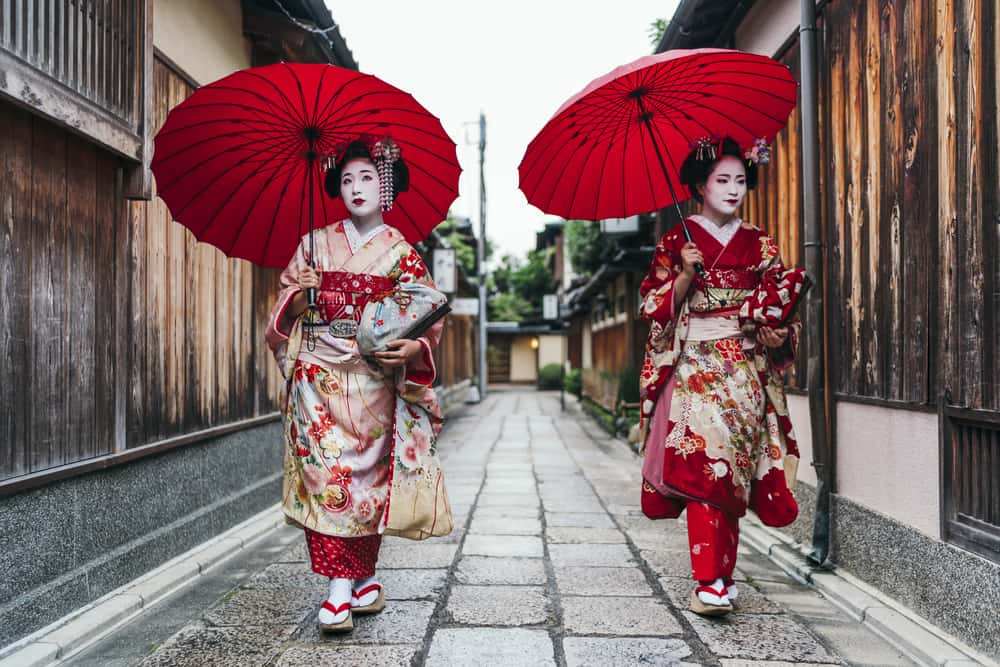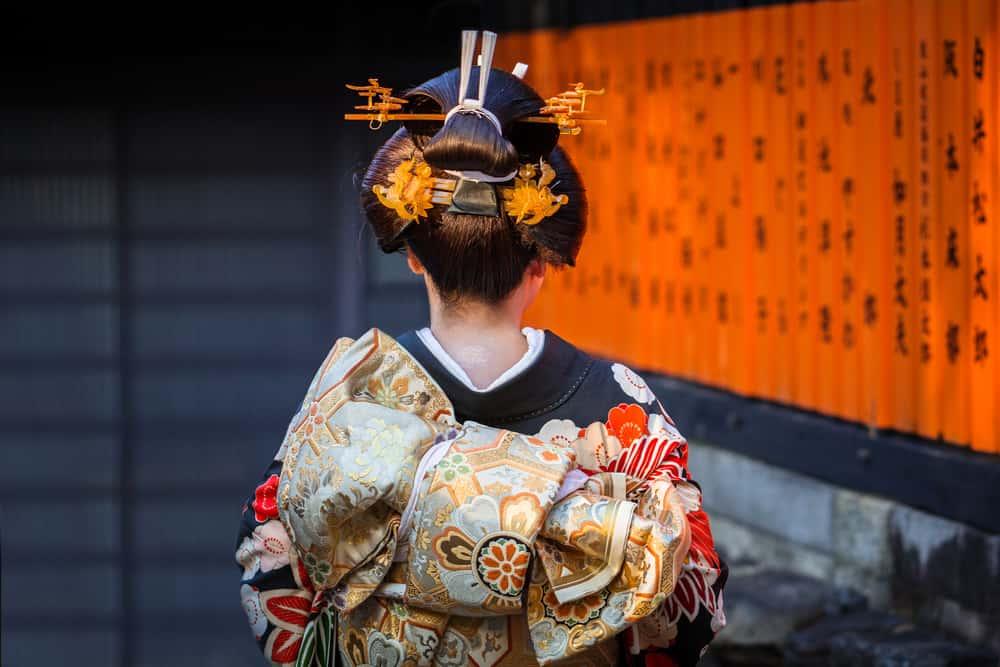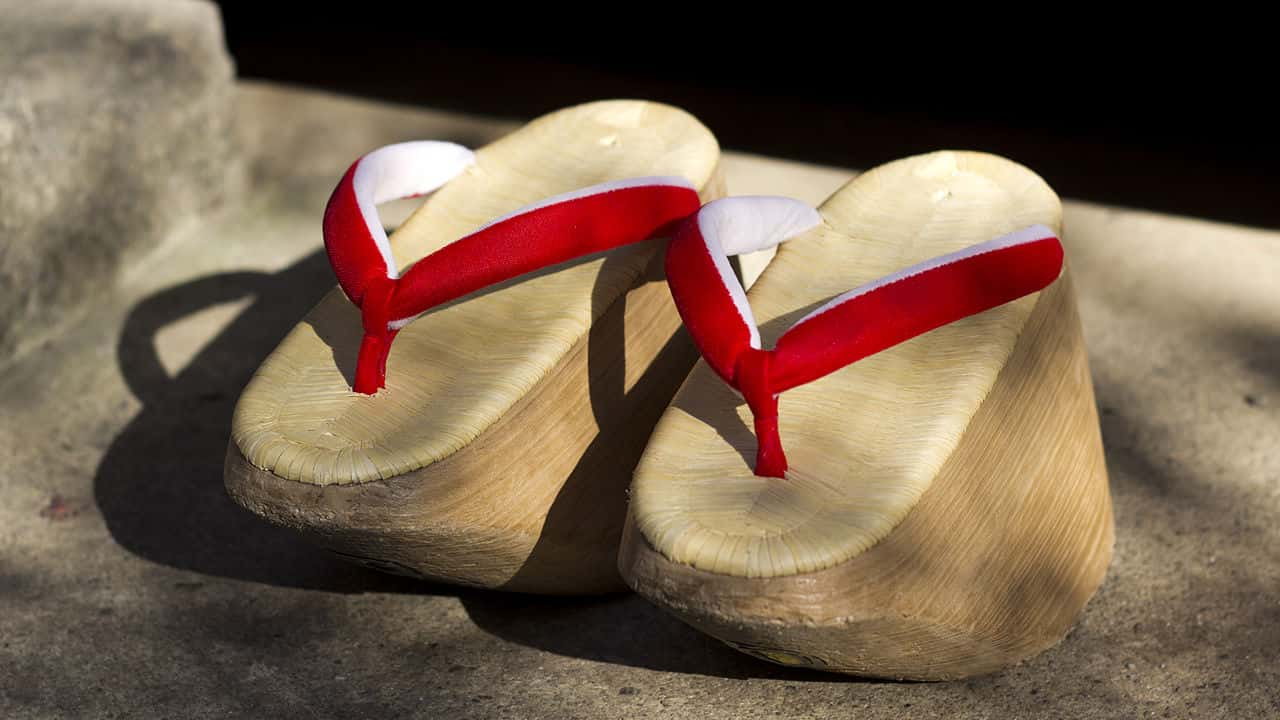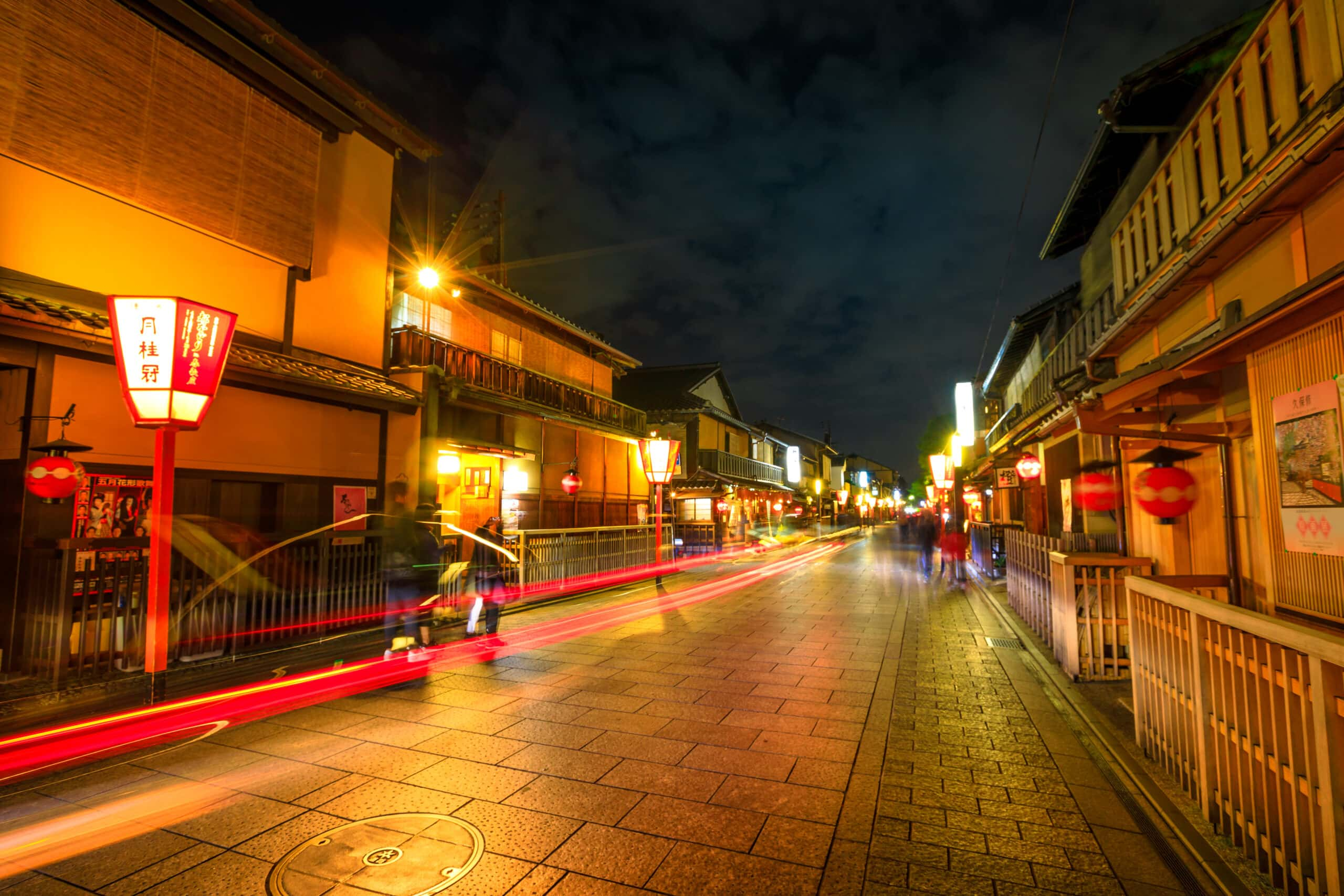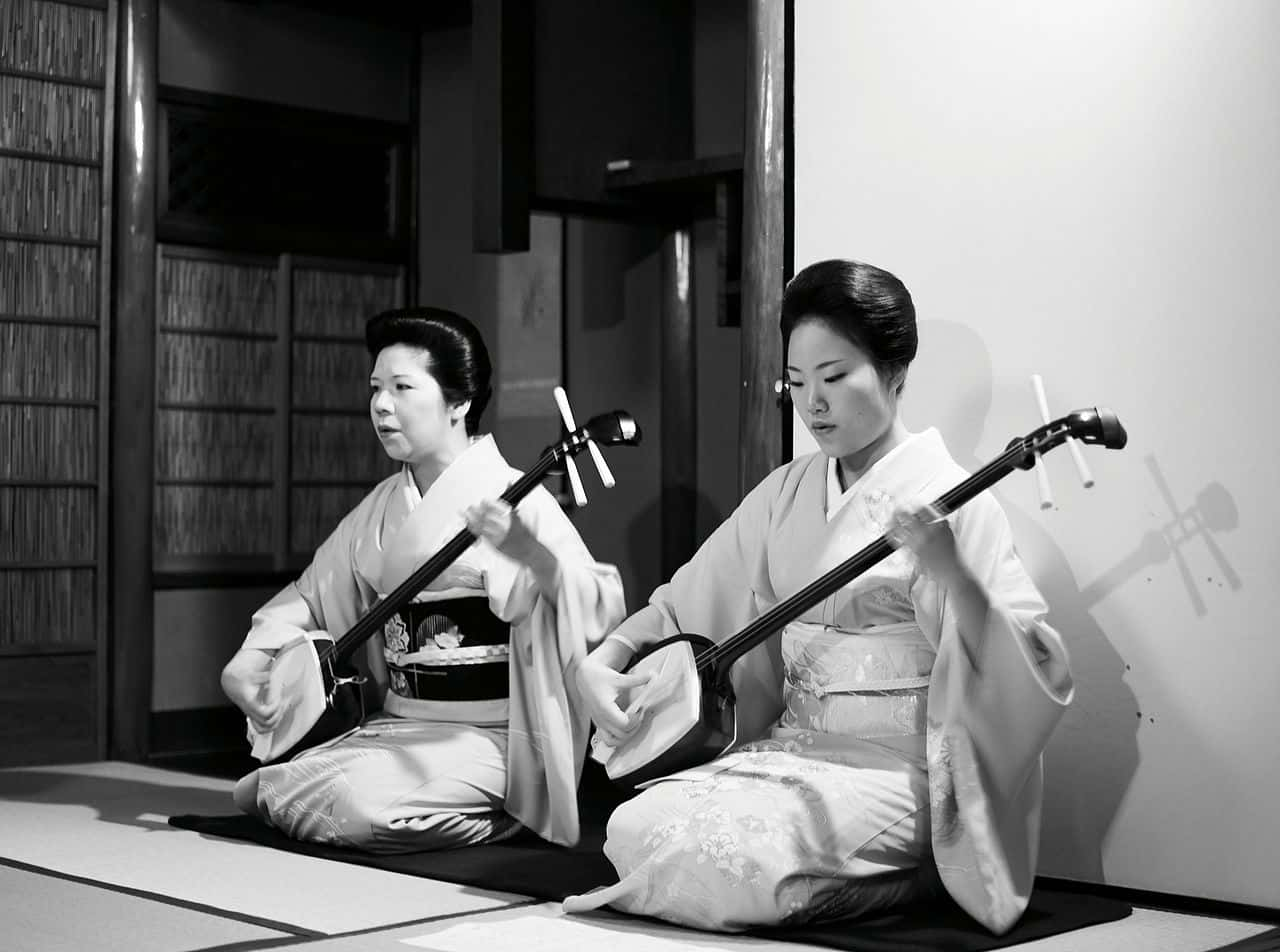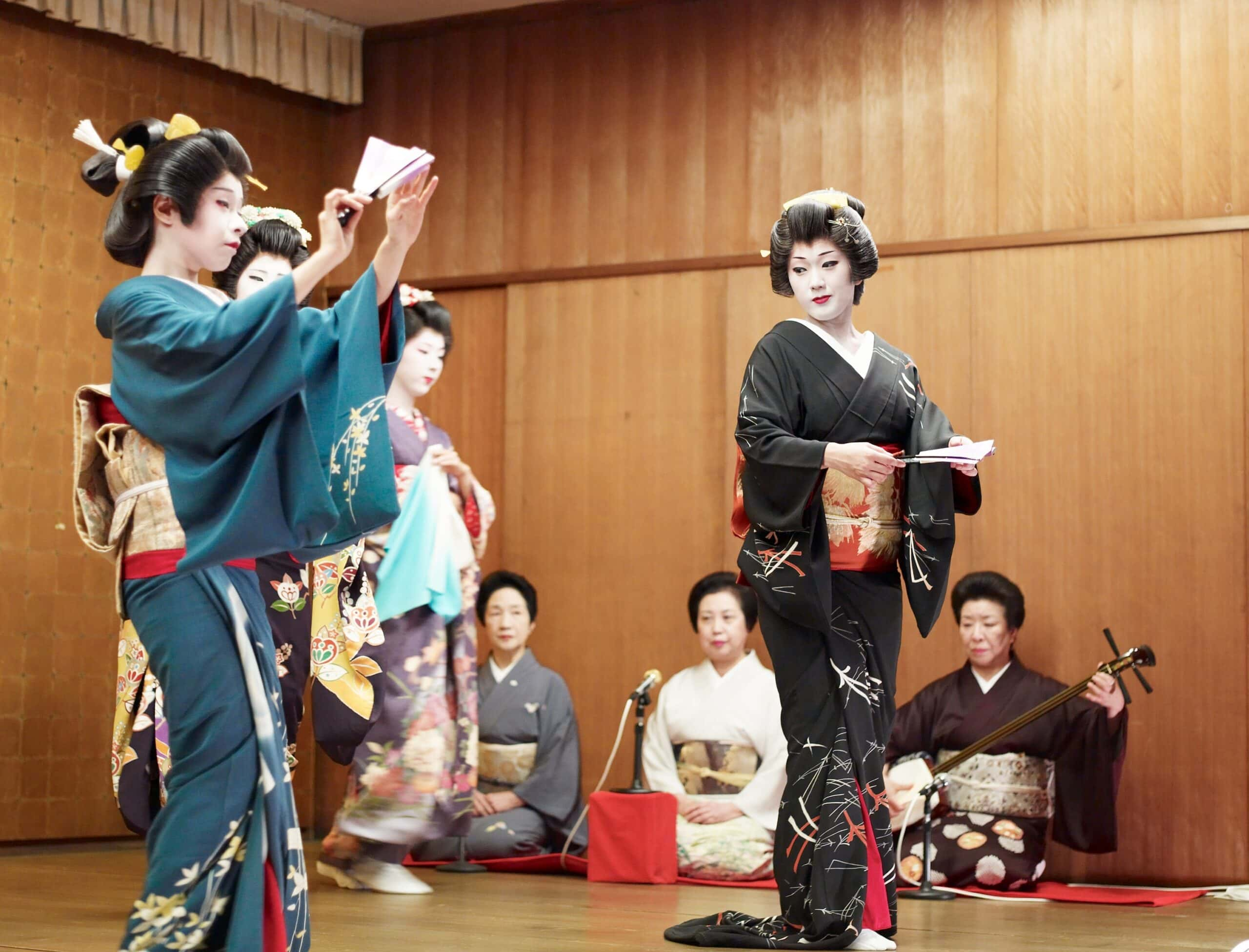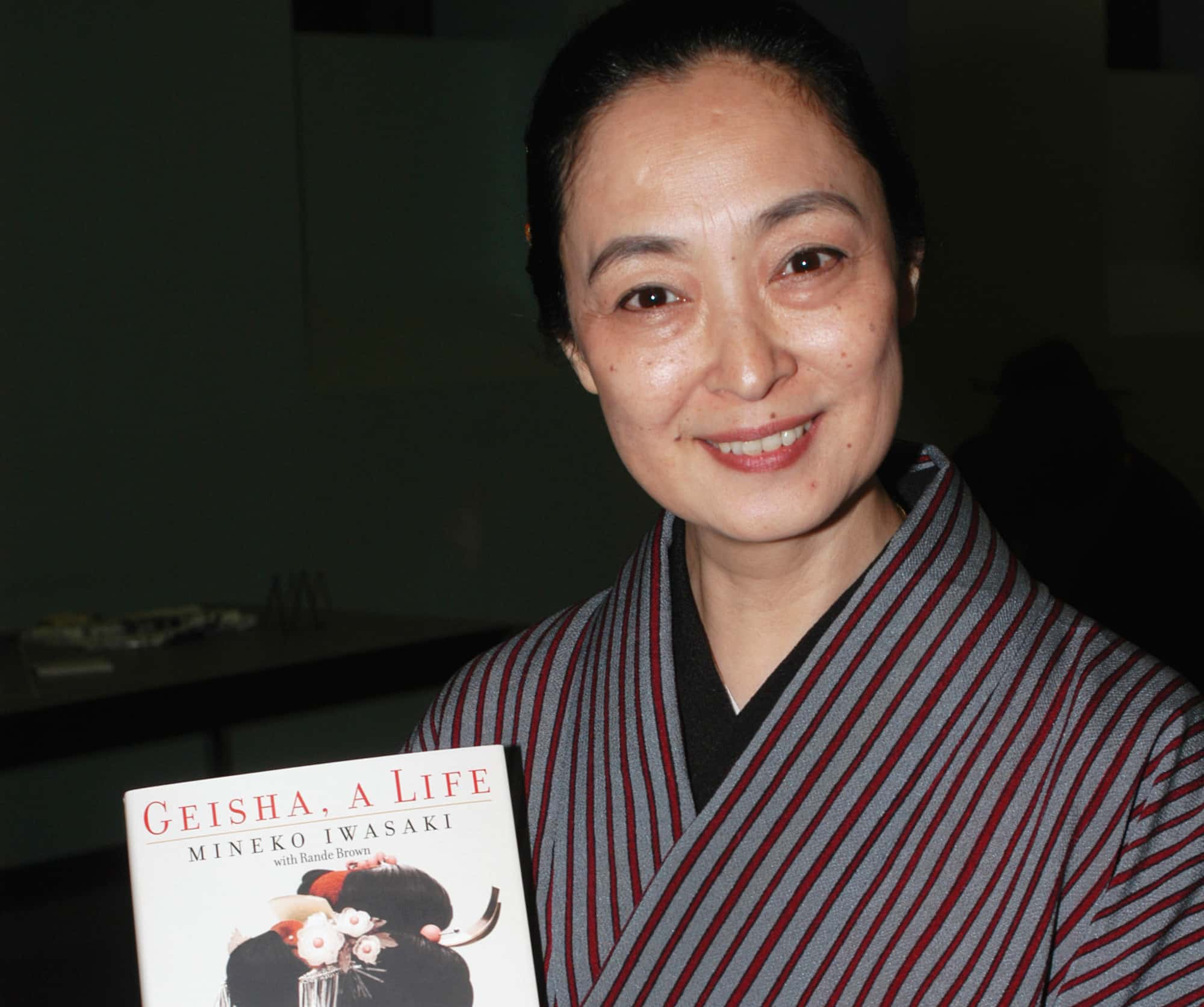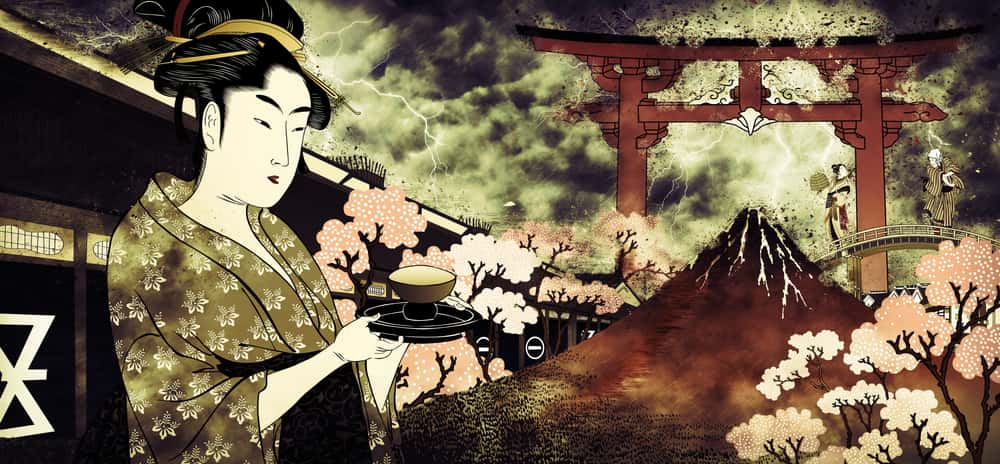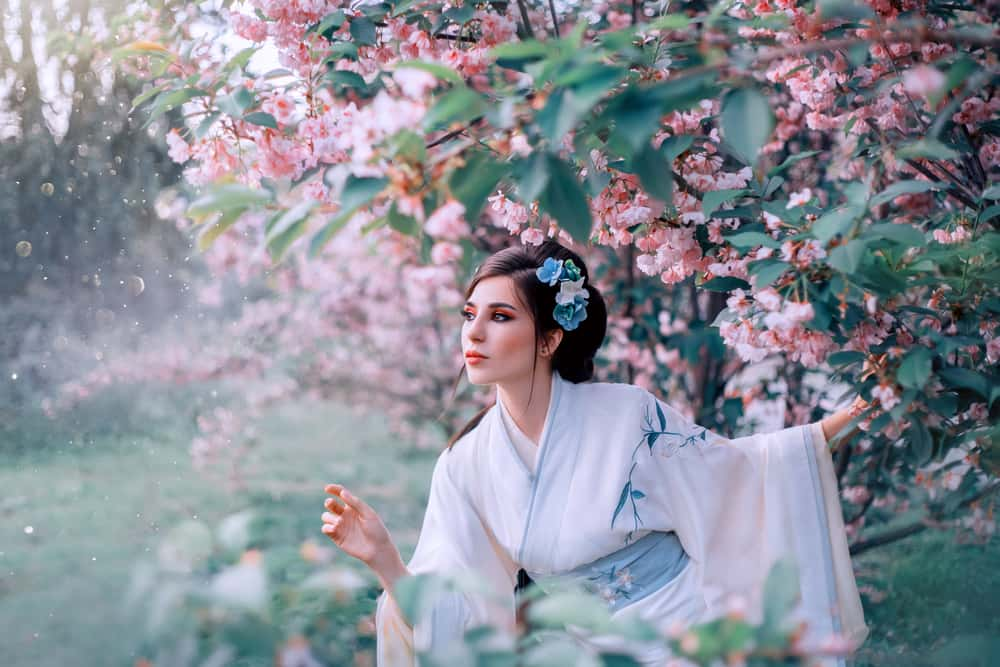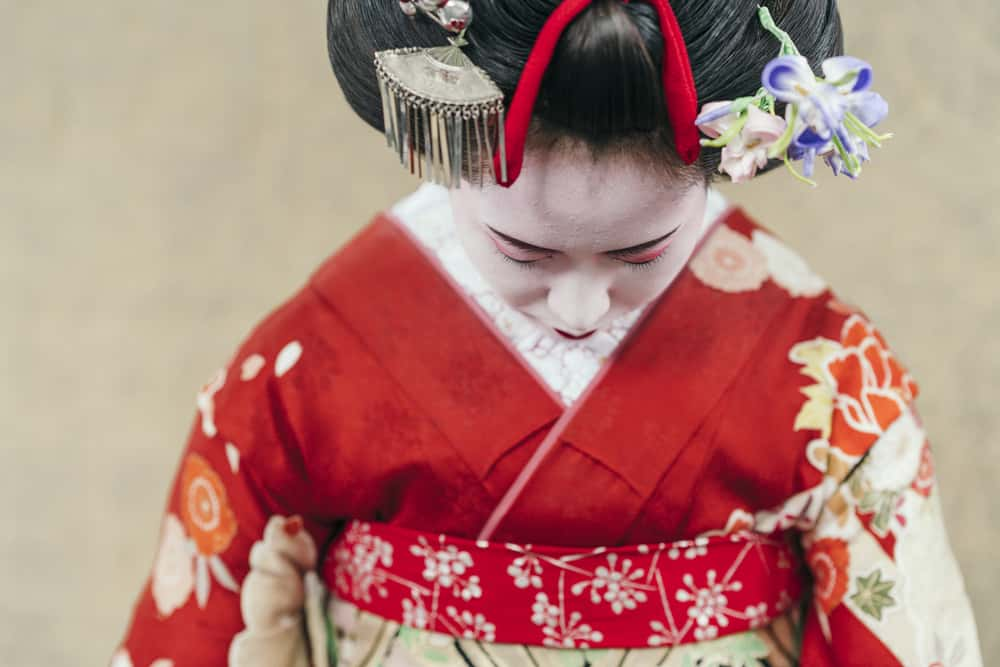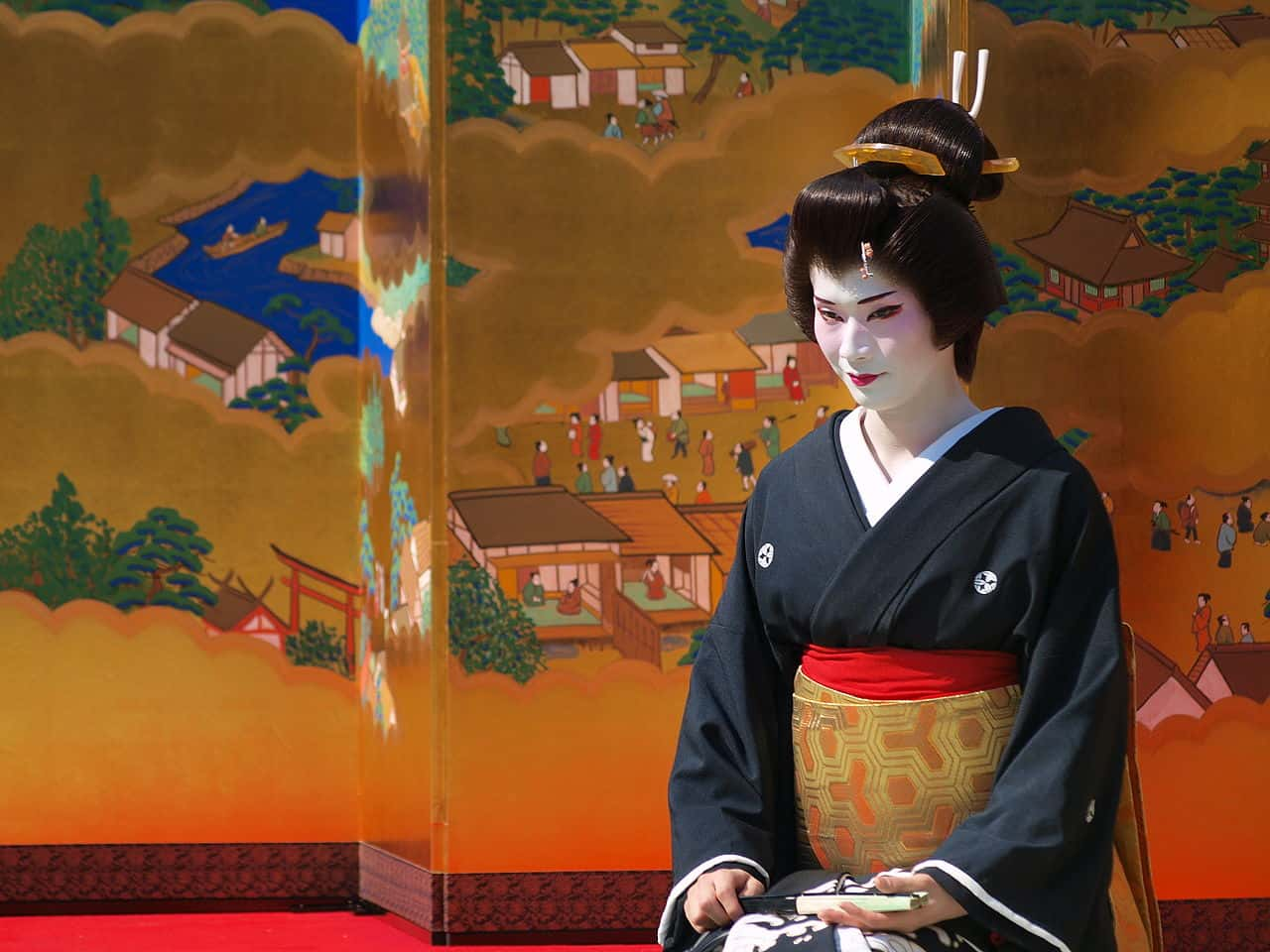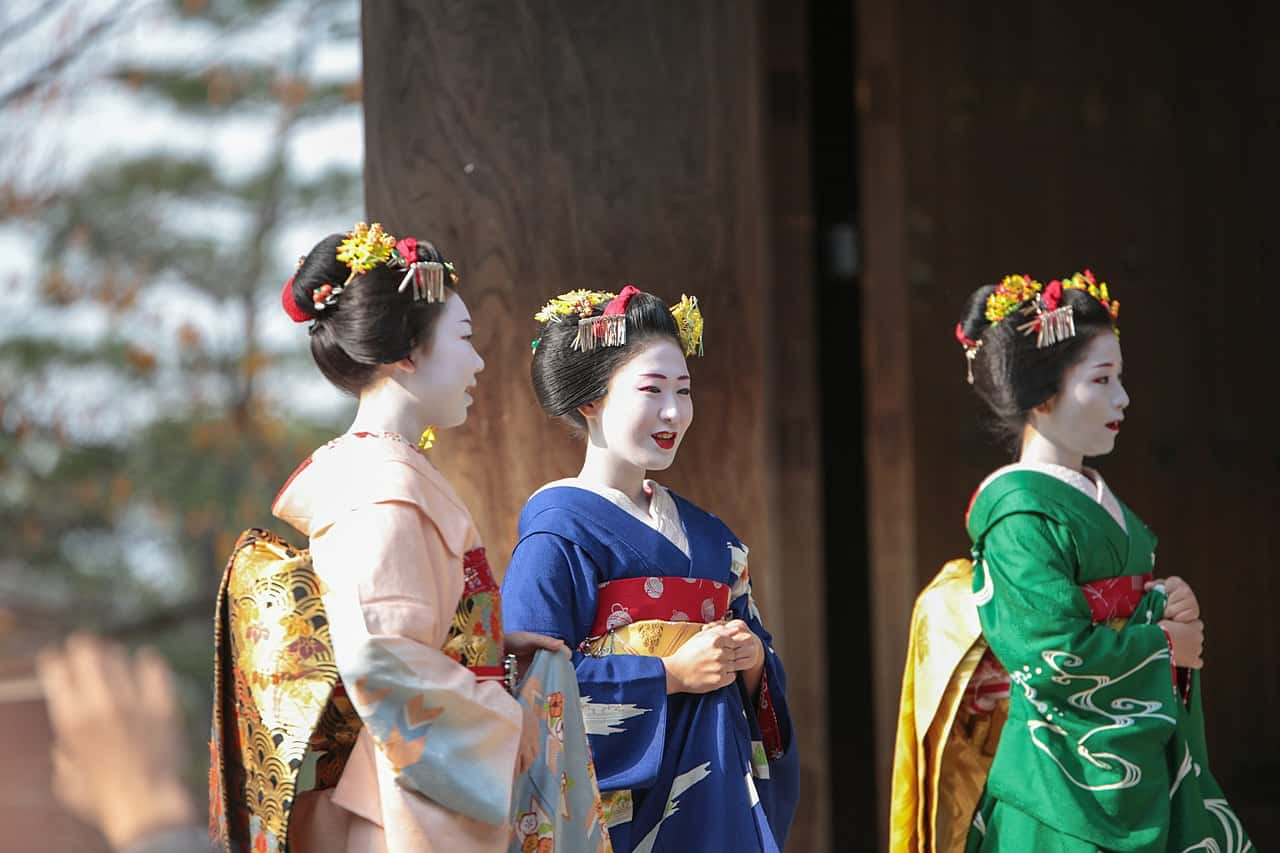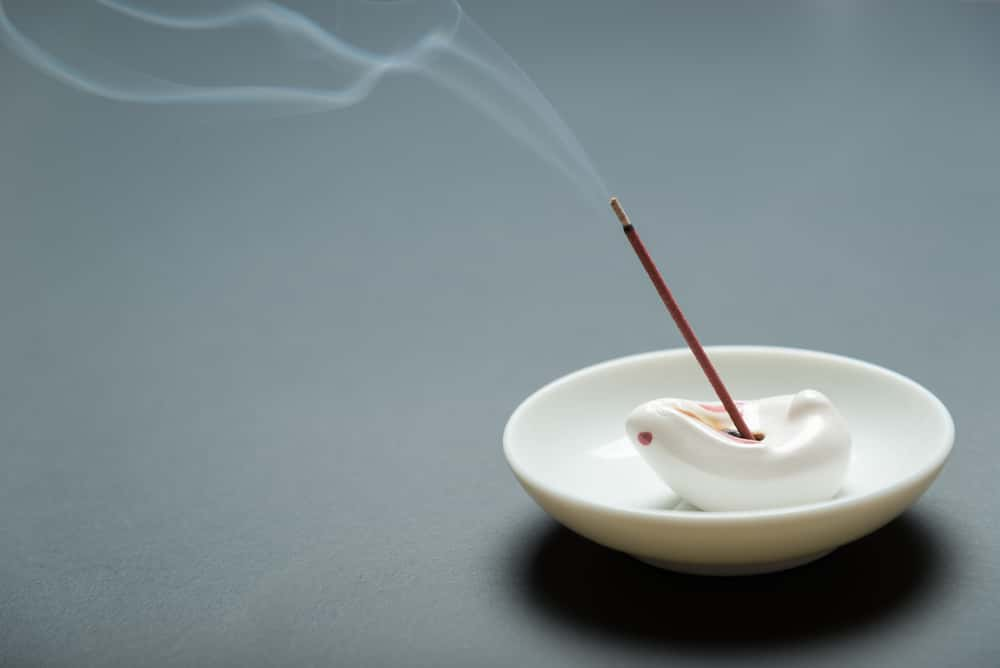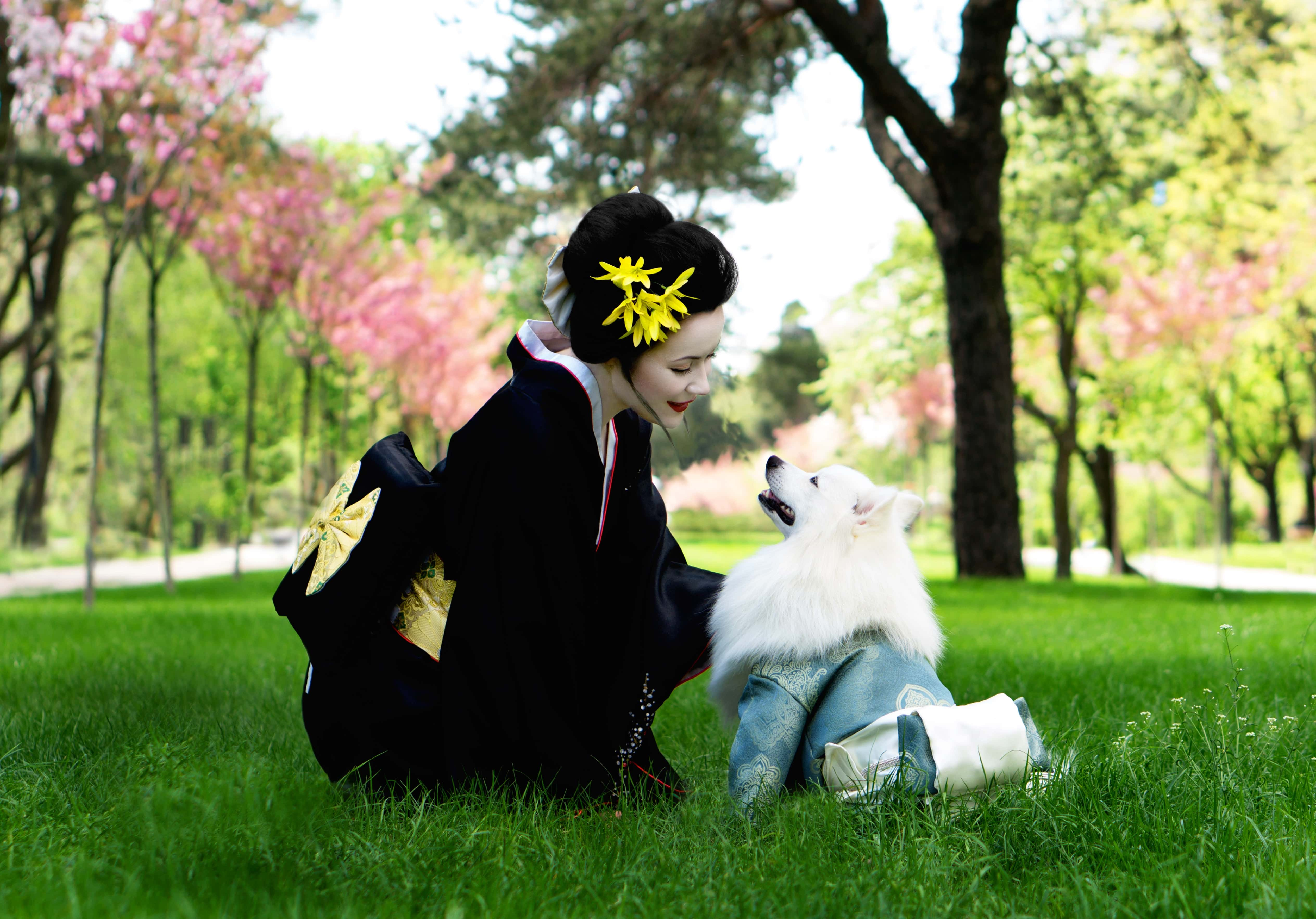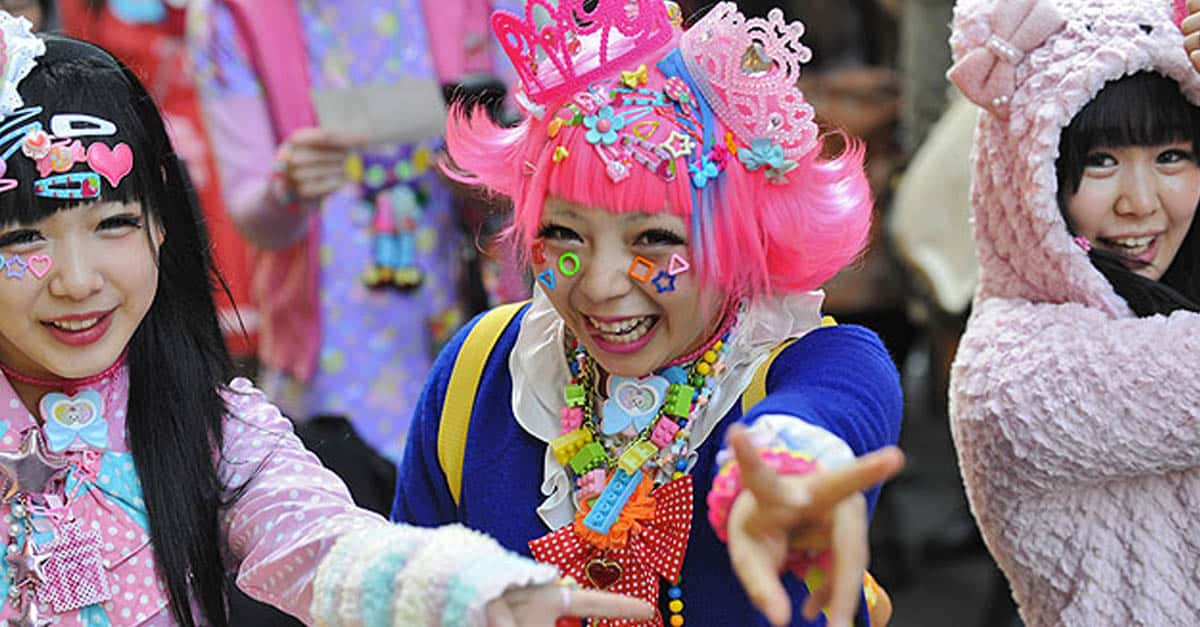“To be a geisha, you have to have to an iron-clad layer around you—around your physical body and your heart”—Michelle Yeoh
If you’re not already familiar with the term, a geisha is a female Japanese entertainer/hostess who is skilled in traditional Japanese classical music, dance, games, and conversation. The concept and practice of being a geisha first emerged about 1,500 years ago. Girls who were educated in the arts could earn a living by entertaining at high-class gatherings. In 794 AD, the Imperial court moved to Kyoto, and a culture began to form that favored female dancers and performers. That culmination of that aspect of Japanese culture would be the emergence of the geisha in the 18th century. Below are 42 graceful facts about this centuries-old profession.
Geishas Facts
42. A Man’s Job
Geisha did not begin as a woman’s profession. Male geisha were known as “honko” and danced in bars, restaurants and geisha tearooms for their customers. By the start of the Meiji period, geishas were mostly women.
41. Artist
In the Japanese language, the prefix gei means art, and sha means person who is employed in. In a literal translation, the word geisha means artist.
40. Master vs Apprentice
In the Japanese language, geisha, geiko and geigi translate to almost the same thing, but the difference between them is regional. A geisha is from Tokyo but is a commonly accepted term for geiko and geigi. Geiko refers to a geisha who is specifically from Kyoto and geigi are from other regions in Japan. Maiko translates to ‘dancing girl’ or ‘child’ and is a term for an apprentice geiko.
39. Conscripted
Early geishas were not geishas by choice. They were either born into it or they were from poor families and were adopted into it. Today, girls are required to stay in school until 15, but after that, they are free to choose to become geishas.
38. How Does My Hair Look?
A geisha and a maiko can be differentiated by their hairstyles. Unlike geisha, who wear special wigs called katsura, a maiko uses their own hair, but can use hair extensions. To protect their updo between visits to the hairdresser, they sleep on a special support called a takamakura. A maiko will also wear more elaborate ornaments in their hair, while those of a geisha are subtler. Some maiko develop bald spots from wearing these hairstyles for long periods of time, but they consider it to be a point of pride.
37. Half -Jewel
A geisha apprentice is also referred to as a hangyoku which translates to half-jewel. In the past, a hangyoku would be paid half as much as a fully-trained geisha.
36. Training Time
Once upon a time, a geisha could start training as young as three or five years old, but in modern times, that no longer happens. Most apprentices train for a full year before becoming full geishas regardless of their age. If a woman is 20 or older when they start training they are generally not given the title of maiko, but they are still required to train for a minimum of 12 months before they can become full geishas.
35. Painted Faces
Traditional geisha makeup includes a white foundation powder called oshiori that she uses to cover her face and neck. It also includes bright red lipstick and black and red lining around the eye. Older geishas will sometimes stop wearing the powder but retain the rest of the makeup.
34. Misconceptions
Geishas have often been mistaken for or assumed to be prostitutes, but this isn’t the case. The misconception likely comes from misrepresentations in movies, and the fact that some prostitutes pretended to be or were confused with geishas by soldiers in WWII. A true geisha’s purpose is to entertain, and by law cannot take clients from prostitutes.

History's most fascinating stories and darkest secrets, delivered to your inbox daily.
33. Dwindling Numbers
In the heyday of geishas around the 1930s, there were as many as 80,000 women who were maikos and geishas. Over time, that number has dwindled, and there are only around 1,000 remaining active geishas.
32. Home
Geishas live together in a boarding house called an okiya. The woman who owns the okiya is called an oka-san (mother) and she pays for the clothing and lodging of the maiko in exchange for her future earnings as a geisha. The full cost of training for a maiko can be around $500,000.
31. Black Teeth
A geisha custom called ohaguro was the blackening of teeth. The custom was originally for beauty, but now it is mostly done when a Maiko graduates to full geisha.
30. Levels of Style
Among geishas there are different levels of pay and a different style to match each level- ohanadai, gyokudai, and senkoudai. Dai is Japanese for price, and then ohana means flower, gyoku is a sphere or jewel, and senkou means incense.
29. Strictly Forbidden
While in training, a geisha is prohibited from using a cell phone or email and watches TV rarely. A maiko also works all but two days a month, and is only able to see friends and family a few times a year on special occasions.
28. Permission to Enter
A person is typically not allowed to enter an okiya off the street. To gain permission to enter, they must be referred by another client, or have a rapport with the proprietress. A foreigner was also not allowed to enter unaccompanied, but those restrictions have loosened somewhat in modern times.
27. Down Time
Even when a geisha is at home and off-duty, she is never completely free to relax. A geisha is expected to maintain proper manners at all times and to set an example for younger geishas.
26. Equal to Men
A geisha traditionally does not behave in a meek or submissive manner. They needed to be up-to-date on current affairs and be able to hold clever and engaging conversations with their clients. At a time when many Japanese wives were not allowed to speak to their husbands as equals, geishas could converse on a wide number of topics and speak to them at the same level.
25. A Defining Characteristic
A geisha’s kimono takes up to three years to manufacture and is her biggest expense. The formal kimono is entirely made of silk and has a low-dipped neckline to show off the back of the neck, which is considered to be extremely sensual. The rest of the time, their kimonos are more understated.
24. Silk Knots
To complete the look of the kimono, geishas tie a long piece of silk around their waists called an obi. The obi measures 4 meters (about 13.2 feet) long and is elaborately decorated. A professional dresser known as the kitsuke helps the geisha with her kimono and ties the obi knot in the back. A maiko’s obi is 5 meters (16.4 feet) long and is often more elaborately decorated than that of the geisha.
23. Why White?
While today the white painted face is a geisha trademark, originally, there was a more practical reason for painting their faces white. Before electric lighting, homes were lit by candlelight, and the geishas would paint their faces to help them stand apart from other people attending the party.
22. A Community Run by Women
Even back in the early days of geishas, the geisha houses were run by women and without interference from men. Once their debt to the mother was paid, a geisha was free to branch out on her own and keep most of her wages outside of her sponsorship fees.
21. A Wealthy Patron
Being a geisha is extremely expensive and it was tradition for a geisha to find a wealthy man called a danna, who pays for her expenses throughout her life. Being a danna is a status symbol in Japan as it means that they’re wealthy enough to support a geisha. It was possible for a geisha to have a personal relationship with her danna, but sex and intimacy were not considered to be repayment for his support.
20. Making the Distinction
The first use of the word geisha was in 1750 by a female performer from the Fukigawa region, but these performers were usually considered to be courtesans. To separate geishas and courtesans/prostitutes, the Kemban was created in 1779. The Kemban is a registration office for geishas, and by 1813, geisha was officially recognized as a profession and the geisha name came into proper use.
19. Dying Out
Even today, dinner with a geisha is an extremely expensive evening and can cost about 80,000 yen—about $750US. Many modern Japanese men are forgoing the expense to seek out cheaper forms of entertainment and as a result, the geisha tradition is in danger of disappearing.
18. Staying Single
A geisha is prohibited from getting married as long as she is working. Once she retires from geisha life, she is free to marry if she wishes.
17. The Perfect Woman
The entire image of the geisha is crafted to embody the Japanese ideal of the perfect woman. She is beautiful and cultured, and resembles a doll. For the most part, she is like a work of art—there to look at and admire but not to touch. According to Jodi Cobb in her National Geographic article about geishas, “Her business is to sell a dream—of luxury, romance, and exclusivity—to the wealthiest and most powerful men in Japan”.
16. 19th Century Super Model
Geishas in the 19th century were the equivalent of modern-day movie stars or super models. The best-known geishas earned a large amount of money and were trend-setters in fashion and culture. This was a far cry from the typical life of a Japanese woman at the time where they were mostly either wives or prostitutes.
15. Big Sisters
All geishas are required to have a mentor known as an onee-san. The girls are bonded together as sisters in a ceremony called a san san kudo. In the ceremony, cups of sake are passed between them and shared to symbolize the union which lasts for life. It is a key ritual in geisha culture.
14. Special Name
Geishas do not use their real names professionally. They choose a special name which combines an element of their big sister’s name, and fashion and fortune. The name is then used to bring luck and good fortune to her house.
13. Forever a Geisha
As of 2014, Tokyo’s oldest living geisha was a 91-year-old woman. Yuko Asakusa has been a geisha for 75 years. She began her apprenticeship at 13 years old and has never looked back. She says she loves to perform and will be a geisha until the day she dies.
12. Wooden Shoes
A geisha wears special sandals called geta. These sandals are made from wood and have a special wooden base similar to platform shoes which keeps the base of the Kimono from dragging in the dirt.
11. Flower Town
Hanamachi is Japanese geisha district found in Kyoto and Tokyo. "Hana" means flower and "machi" means town. There are several okiya (geisha houses) in these districts, and they are a popular tourist spot for those hoping to catch a glimpse of a geisha or a maiko.
10. Small-Bodied Guitar
A shamisen is a Japanese string instrument that was introduced into geisha culture in the 18th century. The instrument has 3 strings and resembles a small-bodied guitar. The strings are plucked with a big wooden pick called a bachi. Today, it is the most famous of the geisha Instruments and the most difficult to perfect.
9. The Geisha Dance
A geisha also learns to perform a dance called the shimai. It is performed as a solo dance in a Kabuki Theatre, but without costumes and masks. The dance is accompanied by traditional Japanese music and contains disciplined and controlled movements similar to tai-chi. Each gesture of the dance tells a story and has meaning.
8. Fact or Fiction?
When Arthur Golden released his novel Memoirs of a Geisha in 1997, it was supposedly based on the real life of geisha Mineko Iwasaki. Iwasaki later regretted speaking with Golden and claimed that he not only violated her privacy in revealing her identity, but that he presents a number of false facts in the book. She released her own book Geisha: A Life in 2002 to set the record straight.
7. Serving Tea
In Japan, the tea ceremony is an important cultural activity that involves the ceremonial preparation and serving of a powdered green tea called matcha. All geisha are well-trained in this art, as well as flower arranging, calligraphy and classical fan and umbrella dancing.
6. Western Geisha
Traditionally, only Japanese women were allowed to become geisha, but in 1976, Liza Dalby became the first Western woman to debut as a geisha. She first learned about geisha on a trip to Japan in her teens, and later returned to the country as a graduate student to research a PhD on geisha culture. Though she had never intended to become a geisha herself, she was eventually invited to join a small geisha community in Kyoto, and later became known as the “blue-eyed geisha.”
5. Changing of the Collar
When a maiko graduates to becoming a full geisha, she goes through a ceremony called an eriage which means “changing of the collar”. In the ceremony, she exchanges the red patterned collar of her kimono for a solid white one. This symbolizes her debut as a geisha, and she is then able to start entertaining on her own.
4. Mizuage
Until the practice was made illegal in 1959, as part of the maiko’s coming of age ceremony, her patron had the right to take the maiko’s virginity. During the ceremony, the top-knot of her hair was symbolically cut, indicating that she was ready to come of age. After the ceremony, there would be a party for the maiko. The mizuage was considered to be an important rite of passage for maikos, and the money received for her virginity would help promote her debut as a geisha.
3. Learn by Observation
The second stage of geisha training is a period of learning by observation called the minari stage. This is where she focuses on training in the field, observing her mentor to learn everything that isn’t taught in a classroom. She learns how to interact with men, how to kneel and rise in a graceful manner, and the nuanced movements of geishas. During this period, her big sister also introduces her into geisha society, so that she’ll already have established relationships by the time she makes her debut.
2. Measuring Time
Clocks are not used to measure a geisha’s time at a party. Instead, they use incense sticks which take roughly an hour to burn. At the end of the night, the geisha was paid by the number of sticks that had been burnt. The fee is called an incense fee, but in Kyoto, they prefer flower fee.
1. Becoming a Geisha
A geisha cannot be too tall or too skinny. Any woman who is over 1.6m (5’3”) tall is considered to be too tall to be a geisha as the platform shoes will add another 10cm (4”) to her height. A geisha must also weigh a minimum of 45kg (95lbs.) as their clothing, hair and accessories can weigh up to 10kg (22lbs.) and if they are too skinny, they can’t support it. Most importantly, a prospective geisha must be comfortable with the rigid and structured lifestyle where everything from mannerisms to language and personal grooming differ from modern life.
Sources: 1, 2, 3, 4, 5, 6, 7, 8, 9, 10, 11, 12, 13, 14, 15, 16, 17, 18, 19, 20, 21, 22, 23, 24, 25, 26, 27, 28, 29, 30, 31, 32

